Risultati: 34
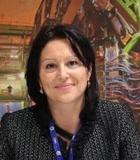
Funzione/Ruolo
Ricercatrice presso l'INFN (Istituto Nazionale di Fisica Nucleare), sezione di Padova.
Percorso professionale
Dopo la laurea in Fisica presso l'università di Padova nel 1992, perfeziona la sua formazione attraverso un dottorato di ricerca in Fisica che consegue nel 1996. Già nello stesso anno prosegue i suoi studi con un post- doc presso l'università e l'INFN, sezione di Padova. Dal 2000 è ricercatrice confermata all'Istituto Nazionale di Fisica Nucleare presso la Sezione INFN di Padova. Nel 2008, 2012 e 2014 collabora come Associata Scientifica con il CERN di Ginevra e il laboratorio Fermilab di Chicago. Attualmente si occupa dello studio delle prospettive offerte dai nuovi progetti della Fisica delle Alte Energie dopo LHC.
Risultati scientifici
Nel 1996 osserva assieme ai colleghi del CDF il decadimento del top quark (particella fondamentale del Modello Standard) e ne misura la massa e la sezione d'urto di produzione attraverso lo sviluppo di un metodo originale di elaborazione dei dati che permette di estrapolare la stima da dati reali. Nel 2004 diviene membro della collaborazione CMS a LHC del CERN di Ginevra. Ha partecipato alla scoperta del bosone di Higgs nel 2012 come responsabile della qualità dei dati da utilizzare per l'analisi. Durante la sua carriera Patrizia Azzi ha focalizzato le sue ricerche sulle particelle e il loro comportamento per fornire spiegazioni sul funzionamento della fisica delle alte energie. Azzi è anche coordinatrice di numerosi progetti di ricerca: nel biennio 2002-2004 dirige il Top Physics Analysis Group per la collaborazione CDF al Tevatron per progettare e realizzare il programma di ricerca sul top quark con un gruppo di circa 200 fisici provenienti da tutto il mondo. Come membro dell'esperimento CMS ha coordinato vari gruppi fra cui il "Physics Perofrmance and Datasets" nel 2012/2013 che si occupa della qualità di dati per la fisica, il gruppo di Fisica "B2G" che si occupa di ricerche di fisica esotica nel 2014/15 e attualmente il gruppo di Fisica che si occupa di studi per il futuro progetto di High Luminosity LHC che inizierà nel 2024.
Patrizia Azzi è anche una sostenitrice attiva del progetto Future Circular Collider (FCC) nell'ambito del quale studia in particolare il potenziale per la misurazione più precisa della massa del quark top in un nuovo acelleratore di leptoni.
Attività editoriali e pubblicazioni
È autrice di numerose pubblicazioni nazionali ed internazionali, tra cui:
(2016) CMS Collaboration, Khachatryan S, [...] Azzi P, et al. Search for vectorlike charge 2/3 T quarks in pp collisions at √s=8 TeV.Physical Review D, 93:012003.
(2014) CMS Collaboration. Search for top-quark partners with charge 5/3 in the same-sign dilepton final state.Physical Review Letters, 112:171801.
(2014) Bicer M, [...] Azzi P, et al. First Look at the Physics Case of TLEP. The Journal of High Energy Physics, 01:164.
(2012) The CMS Collaboration. Observation of a new boson at a mass of 125 GeV with the CMS experiment at the LHC.Physics Letters B, 716:30-61.
(2009) CMS Tracker Collaboration, Adam W, [...] Azzi P, et al. Performance studies of the CMS Strip Tracker before installation.Journal of Instrumentation, 4.
(1999) CDF Collaboration, Abe F, [...] Azzi P, et al. Measurement of the top quark mass with the Collider Detector at Fermilab.Physical Review Letters, 82:271-276.
(1997) CDF Collaboration, Abe F, [...] Azzi P, et al. First observation of the all hadronic decay of t pairs. Physical Review Letters, 79:1992-1997.
(1995) CDF Collaboration, Abe F, [...] Azzi P, et al. Observation of top quark production in p collisions. Physical Review Letters, 74:2626-2631.
(1994) CDF Collaboration, Abe F, [...] Azzi P, et al. Evidence for top quark production in pcollisions at √s = 1.8 TeV.Physical Review Letters, 73:225-231.
(1994) Amidei D, Azzi P, et al. The Silicon Vertex Detector of the Collider Detector at Fermilab. Nuclear Instruments and Methods in Physics Research Section A, 350:73-130.
Riconoscimenti e premi
Nel 2013 riceve dalla Società europea di fisica il Premio "High Energy and Particle Physics", per l'eccezionale contributo alla fisica delle alte energie, assegnato alle collaborazioni ATLAS e CMS, "per la scoperta di un bosone di Higgs, come previsto dal meccanismo Brout-Englert-Higgs".

Funzione/Ruolo
Professoressa di Fisica Sperimentale delle Particelle presso la Oxford University
Percorso professionale
Dopo la laurea in Fisica presso l'Università degli Studi di Pavia nel 1982, prosegue la sua formazione attraverso un dottorato di ricerca in Fisica conseguito nel 1987 alla Syracuse University, New York. Prosegue la sua carriera accademica e nel 1989 diventa docente alla Purdue University in Indiana dove nel 2009 è nominata E. M. Purcell Distinguished Professor of Physics. Dal 2013 è docente della University di Oxford.
Risultati scientifici
Daniela Bortoletto ha partecipato a molte importanti scoperte nel campo della fisica delle particelle elementari. La sua attività di ricerca inizia alla Università di Cornell dove dal 1984 al 1989 si dedica allo studio del b-quark con CLEO. Dal 1991 al 2010 partecipa all'esperimento CDF (Collider Detector at Formilab) al Fermilab, dove contribuisce alla scoperta del top quark, alle prime misure delle sue proprietà, e alla ricerca del bosone di Higgs al Tevatron, la macchina acceleratrice che in quegli anni raggiungeva la più alta energia al mondo di collisione dei fasci. Il suo gruppo collabora alla costruzione del rivelatore al silicio di CDF. Nel 1996, comincia a partecipare all'esperimento CMS (Compact Muon Selenoid) al CERN, in cui ha un ruolo importante nella costruzione del rivelatore a pixels. Dopo l'istallazione di questo rivelatore nel 2008, si dedica alla ricerca del bosone di Higgs con la macchina acceleratrice LHC. Dal 2007 al 2014, coordina le attività di tutte le università americane in CMS per organizzare l'upgrade del rivelatore. Nel 2014, lascia CMS ed entra a far parte di ATLAS, dove continua lo studio delle proprietà del bosone di Higgs e la ricerca di altre particelle scalari. Partecipa inoltre all'upgrade del rivelatore ATLAS, necessario quando il numero di collisioni tra i protoni nella macchina LHC sarà incrementato nel 2024.
Attività editoriali e pubblicazioni
Editor di Nuclear Instrument and Methods. Autrice di oltre 1500 pubblicazioni, tra cui:
(2015) Bortoletto D, How and why silicon sensors are becoming more and more intelligent?. Journal of Instrumentation, 10(08).
(2015) Khachatryan V, Mousa J, Tumasyan A, Bortoletto D, et al. Search for dark matter, extra dimensions, and unparticles in monojet events in proton-proton collisions at √s = 8 TeV. European Physical Journal C, 75(5):235.
(2015) Khachatryan V, Mousa J, Tumasyan A, Bortoletto D, et al. Search for physics beyond the standard model in final states with a lepton and missing transverse energy in proton-proton collisions at √s = 8 TeV, Physical Review D, 91(9).
(2015) Khachatryan V, Mousa J, Tumasyan A, Bortoletto D, et al. Measurement of J/ψandψ(2S) Prompt Double-Differential Cross Sections in pp Collisions at √s=7 TeV. Physical Review Letters, 114(19):191802.
(2015) Ad G, Abbot B, Abdallah J, Bortoletto D, et al. Combined Measurement of the Higgs Boson Mass in pp Collisions at √s=7 and 8 TeV with the ATLAS and CMS Experiments. Physical Review Letters, 114(19):191803.
(2015) Khachtryan V, Mousa J, Tumasyan A, Bortoletto D, et al. Observation of the rare Bs0→µ+µ− decay from the combined analysis of CMS and LHCb data. Nature, 522(7554).
(2015) Adam W, Bergauer T, Dragicevic M, Bortoletto D, et al. Trapping in irradiated p-on-n silicon sensors at fluences anticipated at the HL-LHC outer tracker. Journal of Instrumentation, 11(04).
(2015) Aaltonen T, Abazov VM, Abbott B, Bortoletto D, et al. Tevatron Constraints on Models of the Higgs Boson with Exotic Spin and Parity Using Decays to Bottom-Antibottom Quark Pairs. Physical Review Letters, 114(15).
(2015) CDF Collaboration, Aaltonen T, Amerio S, Bortoletto D, et al, Measurement of the production and differential cross sections of W + W − bosons in association with jets in p p ¯ collisions at s = 1.96 TeV. Physical Review D, 91(11).
(2015) CDF Collaboration, Aaltonen T, Amerio S, Bortoletto D, et al. Measurement of the top-quark mass in the t t ¯ dilepton channel using the full CDF Run II data set. Physical Review, D, 92(3).
Riconoscimenti e premi
Nel 1994-1996 Daniela Bortoletto ottiene la Alfred P. Sloan Fellowship. Nel 1997 vince l'Early Career Award NSF (National Science Foundation), mentre tre anni prima aveva ricevuto il Career Advancement Award (NFS). Nel 2004 entra nell'American Physical Society e nello stesso anno riceve il premio Ruth and Joel Spira for Excellence in Undergraduate Education, del dipartimento di Fisica dalla Purdue University. Nel 2013 viene eletta componente dell'American Association Advancement of Science e, nel 2015, dell'Institute of Physics.
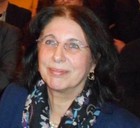
Funzione/Ruolo
Professoressa ordinaria di Fisica all’Università degli studi di Milano e Presidente della Società Italiana di Fisica
Percorso professionale
Dopo la laurea in Fisica all’Università degli Studi di Milano ottiene il Ph.D. nel 1984 presso l’Università di Manitoba (Canada), che è una delle Università fondatrici del Laboratorio TRIUMF di Vancouver (Canada), dove conduce la sua ricerca nel campo della fisica nucleare sperimentale, concentrandosi sulla spettroscopia gamma per la struttura nucleare. Dopo il rientro in Italia come ricercatrice trascorre vari periodi presso il laboratorio ORNL (USA) e il Niels Bohr Institute di Copenhagen in Danimarca. A Milano diventa professoressa ordinaria nel 2002. Nel periodo 2005-2011 è presidente della Commissione Scientifica Nazionale di Fisica Nucleare dell’ INFN, nel 2011-2015 membro del consiglio direttivo INFN (Istituto Nazionale di Fisica Nucleare) come rappresentante MIUR e da gennaio 2020 è presidente della SIF (Società Italiana di Fisica). E’ stata membro e spesso presidente di numerosi comitati scientifici internazionali e di commissioni di valutazione.
Risultati scientifici
La ricerca condotta da Angela Bracco riguarda lo studio della struttura nucleare con esperimenti che utilizzano la spettroscopia gamma e fasci di ioni leggeri e pesanti da acceleratori. Tale ricerca si è concentrata sulle eccitazioni collettive dei nuclei, in particolare quella di tipo di dipolo elettrico. Questa eccitazione costituisce una sonda per le proprietà del nucleo come la forma, gli accoppiamenti a eccitazioni complesse che hanno analogie in altri sistemi fisici a multicorpi. Più recentemente l’attenzione si è rivolta alle vibrazioni dipolari in nuclei instabili con un numero innaturale di protoni e neutroni. Questi nuclei si generano in esplosioni stellari, e alcuni di essi sono prodotti in laboratorio come “fasci radioattivi”. La conoscenza delle oscillazioni dipolari in questi nuclei offre la possibilità di dare informazioni rilevanti per i modelli di nucleosintesi dei nuclei pesanti. Questa ricerca riguarda quindi un capitolo della fisica nucleare che ha implicazioni nell’ambito dell’astrofisica nucleare.
In particolare, si sta attualmente occupando delle oscillazioni dei neutroni alla superficie del nucleo in quanto la loro comprensione è rilevante per la descrizione delle stelle di neutroni che sono a loro volta sorgenti di onde gravitazionali.
Nel corso degli anni ha anche partecipato allo sviluppo e costruzione di nuovi rivelatori a scintillazione e a stato solido ad alta segmentazione per la misura della radiazione gamma. I nuovi rivelatori sono stati finalizzati a misure di alta selettività che hanno permesso di ottenere nuovi dati rilevanti per la struttura dei nuclei in regioni non ancora investigate che hanno importanti implicazioni astrofisiche.
Attività editoriali e pubblicazioni
Angela Bracco è direttrice delle riviste della Società Italiana di Fisica, supervisory editor di Nuclear Physics A (Elsevier) e membro dello Steering Committee di EPJ (Springer and Nature).
Di seguito una selezione delle sue più recenti pubblicazioni:
(2019) Bracco, A.; Lanza E. G.; Tamii, A. Isoscalar and isovector dipole excitations: Nuclear properties from low-lying states and from the isovector giant dipole resonance. PROGRESS IN PARTICLE AND NUCLEAR PHYSICS,106: 360-433.
(2018) Morales, A. I.; Benzoni, G.; Watanabe, H.; Bracco A. et al. Is seniority a partial dynamic symmetry in the first vg(9/2) shell? PHYSICS LETTERS B, 781:706.
(2017) Nakatsuka, N.; Baba, H.; Aumann, T.; A. Bracco et al. Observation of isoscalar and isovector dipole excitations in neutron-rich O-20, PHYSICS LETTERS B768: 387.
(2017) Leoni, S.; Fornal, B.; Marginean, N.; Bracco, A. et al. Multifaceted Quadruplet of Low-Lying Spin-Zero States in Ni-66: Emergence of Shape Isomerism in Light Nuclei. PHYSICAL REVIEW LETTERS 118 , 162502.
(2015) Ceruti, S.; Camera, F.; Bracco, A.; et al. Isospin Mixing in Zr-80: From Finite to Zero Temperature. PHYSICAL REVIEW LETTERS 115, 222502.
(2016) Bocchi, G.; Leoni, S.; Fornal, B.; Bracco A. et al. The mutable nature of particle-core excitations with spin in the one-valence-proton nucleus Sb-133. PHYSICS LETTERS B 760, 273.
(2015) Bracco, A.; Crespi, F. C. L.; Lanza, E. G. Gamma decay of pygmy states from inelastic scattering of ions. EPJA 51,99.
(2014) Pellegri, L.; Bracco, A.; Crespi, F. C. L.; et al. Pygmy dipole resonance in Sn-124 populated by inelastic scattering of O-17. PHYSICS LETTERS B (2014) Volume: 738, 519.
(2013) Crespi, F. C. L.; Bracco, A.; Nicolini, R.; et al. Isospin Character of Low-Lying Pygmy Dipole States in Pb-208 via Inelastic Scattering of O-17 Ions. PHYSICAL REVIEW LETTERS, 113, 1, 012501.
(2013) Bracco, A. Concluding remarks on the EMIS2012 conference. NIM 317, 810.
(2013) Larsen, A. C.; Blasi, N.; Bracco, A.; et al. Evidence for the Dipole Nature of the Low-Energy gamma Enhancement in Fe-56, PHYSICAL REVIEW LETTERS, 111, 242504.
Riconoscimenti e premi
Membro della Accademia Europea
Membro del Committee on International Scientific Affairs (CISA) dell'American Physical Society (APS)
Nel 2011 ha ricevuto il Premio della Fondazione EnergyLab
Nel 2018 ha ricevuto il premio GENCO membership dal GSI Exotic Nuclei Community (GSI, Laboratory, Germany)
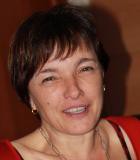
Funzione/Ruolo
Professoressa ordinaria e ex Prorettrice delegata del Polo Territoriale di Como del Politecnico di Milano
Percorso professionale
Dopo aver conseguito la laurea in Fisica all'Università degli Studi di Milano nel 1986, prosegue la sua formazione con un dottorato di ricerca in Scienze Geodetiche e Topografiche che consegue nel 1991 presso il Consorzio Interuniversitario di Milano, Torino e Pavia. Dal 1992 al 1994 è Ricercatrice all'Istituto Nazionale di Geofisica e Vulcanologia, dove contribuisce a creare l'International Geoid Service (IGeS) della Associazione Internazionale di Geodesia (IAG) ed entra a far parte del Comitato di redazione del Bollettino IGES, diventandone poi redattrice capo. Dal 1994 è Ricercatrice del Politecnico di Milano, e quattro anni più tardi diventa professoressa associata. Nel 1997 fonda e coordina il Laboratorio di Geomatica presso il Polo Territoriale di Como del Politecnico di Milano. Dal 2010 è professoressa ordinaria di Cartografia Numerica, Geographic Information Systems (GIS) e Internet GIS e dall'anno successivo prorettrice delegata presso il medesimo Polo Territoriale.
Risultati scientifici
L'attività di ricerca di Maria Antonia Brovelli è nell'ambito della geomatica (disciplina che si occupa dell'acquisizione, restituzione, analisi statistica e gestione di dati di natura metrica e tematica relativi alla superficie della Terra). Già dal 1988 inizia la sua carriera partecipando a progetti di ricerca nazionali e internazionali, dapprima dedicandosi alla geodesia operativa, alla radar-altimetria e alle analisi statistiche, e successivamente, dopo essere diventata professoressa associata, alla cartografia digitale e sistemi informativi geografici, principalmente liberi e open source. È stata ed è responsabile di contratti di ricerca e di consulenza relativi alla progettazione e realizzazione di Sistemi Informativi Territoriali, Geoservices web, sistemi di elaborazione dati GPS e dati telerilevati, sistemi di integrazione e di controllo della qualità dei modelli digitali del terreno. Negli ultimi anni si è occupata di VGI (Volunteer Geographic Information), Citizen Science e Big Geo Data.
Attività editoriali e pubblicazioni
Maria Antonia Brovelli è redattrice della rivista internazionale Applied Geomatics pubblicata da Springer, co-autrice di tre libri di testo sul trattamento dei dati statistici, di un volume sulle ortofoto, ovvero le fotografie aeree geometricamente corrette e georeferenziate in modo tale da essere utilizzate come carte, e modelli digitali del terreno, e autrice di oltre 150 pubblicazioni scientifiche fra cui:
(2018) Brovelli MA, Zamboni G, A new method for the assessment of spatial accuracy and completeness of OpenStreetMap building footprints, ISPRS International Journal of Geo-Information 7(8), 289.
(2016) Brovelli MA, Minghini M, Moreno Sanchez R, Oliveira R. Free anD Open Source Software for Geospatial Applications (FOSS4G) to support Future Earth. International Journal of Digital Earth, 1-19.
(2016) Brovelli MA, Minghini M, Molinari ME, Mooney P. Towards an automated comparison of OpenStreetMap with authoritative road datasets. Transactions in GIS.
(2015) Brovelli MA, Molinari ME, Hussein E, Chen J, Li R. The First Comprehensive Accuracy Assessment of GlobeLand30 at a National Level: Methodology and Results. Remote Sensing, 7(4):4191-4212.
(2015) Brovelli MA, Minghini M, Zamboni G. Public Participation GIS: a FOSS architecture enabling field-data collection. International Journal of Digital Earth, 8(5):345-363.
(2012) Valentini L, Brovelli MA, Zamboni G. Multi-frame and multi-dimensional historical digital cities: The Como example. International Journal of Digital Earth, 7(4):336-350.
(2011) Brovelli MA, Giori G, Mussin M, M. Negretti M. Improving the Monitoring of the Status of the Environment Through Web Geo-services: The Example of Large Structures Supervision. Transactions in GIS, 15(2), 173-188.
(2008) Brovelli MA, Crespi M, Fratarcangeli F, Giannone F, Realini E. Accuracy assessment of high resolution satellite imagery orientation by leave-one-out method. ISPRS Journal of Photogrammetry and Remote Sensing, 63(4):427-440.
(2004) Brovelli MA, Cannata M, Longoni UM. LIDAR Data Filtering and DTM Interpolation Within GRASS. Transactions in GIS, 8(2), 155-174.
(1993) Knudsen P, Brovelli MA. Collinear and cross-over adjustment of Geosat ERM and Seasat altimeter data in the Mediterranean Sea. Surveys in Geophysics, 14, 4-5:449-459.
(1993) Rummel R, Van Gelderan M, Koop R, Schrama E, Sansò F, Brovelli MA, Migliaccio F, Sacerdote F. Spherical Harmonic Analysis of Satellite Gradiometry. Publications on Geodesy, new series, number 39, Netherland Geodetic Commission, Delft, The Netherlands.
Riconoscimenti e premi
Nel settembre 2015 è stata insignita del Sol Katz Award 2015 per il Geospatial Libero e Open Source Software durante la conferenza FOSS4G 2015 a Seoul, Corea del Sud. Maria Antonia Brovelli fa parte del Direttivo della Società Italiana di Fotogrammetria e Topografia (SIFET) e del Comitato editoriale del bollettino. E' uno dei Direttori di OSGeo (Fondazione Internazionale dei GIS Open Source), Presidente del gruppo di lavoro IV/4 "Collaborative Crowdsourced Cloud Mapping (C³M)" della Società Internazionale di Fotogrammetria e Telerilevamento (ISPRS), membro di UN-GGIM Italia, Presidente del gruppo di lavoro "Capacity Building" del Progetto delle Nazioni Unite "UN OpenGIS", uno dei dieci membri del Task Team Internazionale (unica donna) con il compito di dare vita alla Rete Universitaria Internazionale di UN-GGIM. È inoltre co-organizzatrice dell'evento annuale "Europa NASA World Wind Challenge", che vede impegnati studenti e professionisti nello sviluppo di applicazioni basate sul globo virtuale della NASA.
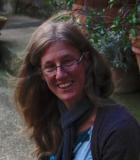
Funzione/Ruolo
Ricercatrice presso l'Osservatorio astronomico di Cagliari
Percorso professionale
Dopo la laurea in Astronomia all'Università degli Studi di Bologna, nel 2000, prosegue i suoi studi nello stesso ateneo dove consegue il dottorato nel 2004. Pochi mesi dopo, diventa ricercatrice all'Osservatorio astronomico di Cagliari, dove si occupa di oggetti compatti (studio della materia ultra densa) e, in particolare, delle osservazioni e dell'indagine delle radio pulsar (uno dei diversi tipi di stelle che contengono molti più neutroni che protoni, chiamate così perché generano un impulso di radiazioni a brevi intervalli regolari). Dal 2012 fa parte della squadra di validazione scientifica del Sardinia Radio Telescope.
Risultati scientifici
L'attività scientifica di Marta Burgay si svolge prevalentemente nell'ambito dello studio delle stelle di neutroni e in particolare nel campo delle osservazioni e dell'indagine sulle emissioni radio delle pulsar. Il suo nome è collegato all'importante scoperta di un sistema binario chiamato J0737-3039A/B, che comprende due stelle di neutroni con caratteristiche pulsar: il primo e, ad oggi, unico sistema formato da due pulsar. Grazie alle sue numerose peculiarità (compresenza di due segnali pulsati, velocità orbitali elevatissime, geometria di taglio del sistema) la doppia pulsar rappresenta un laboratorio unico in svariati campi: nel campo della relatività generale, ad esempio, lo studio dei tempi di arrivo degli impulsi delle due stelle ha permesso di testare la validità della teoria della relatività generale con un margine di errore dello 0.05%. Successive osservazioni di questo sistema, tutt'ora in corso, permetteranno di migliorare ulteriormente questo limite e di testare teorie alternative alla relatività generale. Grazie allo studio della doppia pulsar sarà anche possibile avere la prima misura del momento di inerzia, che serve per descrivere il comportamento di corpi in rotazione intorno a un asse, di una stella di neutroni. Questi dati potrebbero porre nuovi limiti alle possibili equazioni di stato della materia nucleare. Inoltre, la mutua interazione tra la radiazione emessa da una pulsar e la magnetosfera dell'altra, permette di studiare i processi di emissione e i campi magnetici delle pulsar e di effettuare studi di fisica dei plasmi.
Dal 2008 Marta Burgay fa parte del progetto High Time Resolution Universe Survey for pulsars and transients e dal 2013 del progetto SUPERB (Survey for Pulsars and Extragalactic Radio Bursts) grazie ai quali sono già state scoperte quasi 200 nuove pulsar, tra cui più di 30 MSP (pulsar millisecondo), una magnetar (diverso tipo di stella di neutroni con un enorme campo magnetico) con emissioni in banda radio e una pulsar con un pianeta "di diamante".
Attività editoriali e pubblicazioni
Marta Burgay è (co)autrice di 106 articoli con referee pubblicati su riviste internazionali (tra cui 4 su Nature e 5 su Science) che hanno ricevuto un totale di 6784 citazioni. È (co)autrice di 21 comunicazioni scientifiche telematiche (Astronomer's Telegram, GCN Circulars) e (co)autrice di 58 atti di congresso. È editor in chief di un volume di atti congressuali.
[2016] Keane E F, Johnston S, Bhandari S, Barr E, Bhat NDR, Burgay M, Caleb M, Flynn C, Jameson A, Kramer M, Petroff E, Possenti A, van Straten W, Bailes M, Burke-Spolaor S, Eatough RP, Stappers BW, Totani T, Honma M, Furusawa H, Hattori T, Morokuma T, Niino Y, Sugai H, Terai T, Tominaga N, Yamasaki S, Yasuda N, Allen R, Cooke J, Jencson J, Kasliwal MM, Kaplan DL, Tingay SJ, Williams A, Wayth R, Chandra P, Perrodin D, Berezina M, Mickaliger M, Bassa C. The host galaxy of a fast radio burst, Nature, 530:453.
[2015] Lentati L, Taylor S R, Mingarelli C M F, Sesana A, Sanidas SA, Vecchio A, Caballero RN, Lee KJ, van Haasteren R, Babak S, Bassa CG, Brem P, Burgay M, Champion DJ, Cognard I, Desvignes G, Gair JR, Guillemot L, Hessels J W T, Janssen GH, Karuppusamy R, Kramer M, Lassus A, Lazarus P, Liu K, Osłowski S, Perrodin D, Petiteau A, Possenti A, Purver MB, Rosado PA, Smits R, Stappers B, Theureau G, Tiburzi C, Verbiest JPW. European Pulsar Timing Array limits on an isotropic stochastic gravitational-wave background, Monthly Notices of the Royal Astronomical Society, 453:2576.
[2013] Papitto A, Ferrigno C, Bozzo E, Rea N, Pavan L, Burderi L, Burgay M, Campana S, di Salvo T, Falanga M, Filipovic MD, Freire PCC, Hessels JWT, Possenti A, Ransom SM, Riggio A, Romano P, Sarkissian JM, Stairs I H, Stella L, Torres DF, Wieringa MH, Wong G F. Swings between rotation and accretion power in a binary millisecond pulsar, Nature, 501:517.
[2013] Thornton D, Stappers B, Bailes M, Barsdell B, Bates S, Bhat N D R, Burgay M, Burke-Spolaor S, Champion D J, Coster P, D'Amico N, Jameson A, Johnston S, Keith M, Kramer M, Levin L, Milia S, Ng C, Possenti A, van Straten W. A Population of Fast Radio Bursts at Cosmological Distances, Science, 341:53.
[2013] Burgay M, Keith MJ, Lorimer DR, Hassall TE, Lyne AG, Camilo F, D'Amico N, Hobbs GB, Kramer M, Manchester RN, McLaughlin MA, Possenti A, Stairs I H, Stappers BW.The Perseus Arm Pulsar Survey, Monthly Notices of the Royal Astronomical Society, 429:579.
[2011] Bailes M, Bates SD, Bhalerao V, Bhat NDR, Burgay M, Burke-Spolaor S, D'Amico N, Johnston S, Keith MJ, Kramer M, Kulkarni SR, Levin L, Lyne AG, Milia S, Possenti A, Spitler L, Stappers B, van Straten, W. Transformation of a Star into a Planet in a Millisecond Pulsar Binary, Science, 333:1717.
[2006] Kramer M, Stairs IH, Manchester RN, McLaughlin MA, Lyne AG, Ferdman RD, Burgay M, Lorimer DR, Possenti A, D'Amico N, Sarkissian J M, Hobbs G B, Reynolds J E, Freire PCC, Camilo F. Tests of General Relativity from Timing the Double Pulsar, Science, 314:97.
[2006] McLaughlin MA, Lyne AG, Lorimer DR, Kramer M, Faulkner AJ, Manchester RN, Cordes JM, Camilo F, Possenti A, Stairs IH, Hobbs G, D'Amico N, Burgay M, O'Brien JT. Transient radio bursts from rotating neutron stars, Nature, 439:817.
[2004] Lyne AG, Burgay M, Kramer M, Possenti A, Manchester RN, Camilo F, McLaughlin MA, Lorimer DR, D'Amico N, Joshi BC, Reynolds J, Freire PCC, A Double-Pulsar System - A rare Laboratory for Relativistic Gravity and Plasma Physics, Science, 303:1153L.
[2003] Burgay M, D'Amico N, Possenti A, Manchester RN, Lyne AG, Joshi BC, McLaughlin MA, Kramer M, Sarkissian JM, Camilo F, Kalogera V, Kim C, Lorimer DR. An increased estimate of the merger rate of double neutron stars from observations of a highly relativistic system, Nature, 426:531.
Riconoscimenti e premi
Marta Burgay ha ricevuto numerosi riconoscimenti, sin dall'inizio della sua carriera, oltre ad aver ricoperto importanti incarichi scientifici e istituzionali. La sua tesi di dottorato dal titolo "The Parkes High-Latitude Pulsar Survey and the Discovery of the First Double Pulsar" ha ricevuto il Premio Tacchini 2005 della Società Astronomica Italiana (SAIt). Pochi mesi dopo ha ricevuto il Premio Descartes 2005 Excellence in scientific collaborative science come membro del gruppo internazionale PulSE (Pulsar Science in Europe). Nel 2006 è stata premiata con due importanti riconoscimenti, il Premio della Società Italiana di Relatività Generale e Fisica della Gravitazione (SIGrav) per giovani ricercatori, in ambito nazionale, e il Premio della International Union for Pure and Applied Physics (IUPAP) per giovani fisici, in ambito internazionale. Nel 2010 ha vinto il Premio Marsden dell'European Astrosky Networke e il Vainu Bappu Award della Astronomical Society of India. Nel 2011 la XXIII edizione del Premio Marisa Bellisario dedicata a Donne innovazione e capitale umano l'ha premiata nella sezione riconoscimenti speciali ai giovani talenti per la ricerca. Nel 2014 è stata nominata Chevalier de l'autonomie della regione Valle d'Aosta e nel 2015 designata "donna sarda dell'anno" dal Club Lionees di Cagliari.
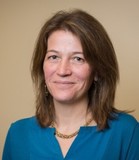
Funzione/Ruolo
Professoressa associata presso il Georgia Institute of Technology, Atlanta, Stati Uniti
Percorso professionale
Dopo aver conseguito la laurea in Fisica all'Università degli Studi di Milano, prosegue il suo percorso formativo presso la Princeton University, conseguendo prima un master nel 1998 e poi un dottorato di ricerca in Fisica nel 2001. Dallo stesso anno è post doc associata alla Princeton University, dal 2002 al 2004 invece ricopre lo stesso ruolo al MIT (Massachusetts Institute of Technology). Nel 2005 è research scientist al MIT, ruolo che ricopre fino al 2007, anno in cui diventa assistant professor della University of Massachusetts Amherst. Presso la stessa università nel 2012 è professoressa associata fino al 2015. Nel 2014 è vising scholar della Cardiff University per circa sei mesi. Dal 2015 è professoressa associata del Georgia Institute of Technology.
Risultati scientifici
La ricerca scientifica di Laura Cadonati riguarda le onde gravitazionali, nello specifico si occupa di individuare, caratterizzare e interpretare quelle di breve durata prodotte da eventi astrofisici di enorme portata come il collasso del nucleo delle supernova o le collisioni di buchi neri. Nel febbraio 2016 si è tenuta la conferenza stampa di presentazione della scoperta (avvenuta nel settembre 2015) che ha cambiato il modo di intendere l'astrofisica: Laura Cadonati e il gruppo di ricerca internazionale di cui fa parte dimostrano l'esistenza delle onde gravitazionali teorizzate da Albert Einsten nella Teoria della Relatività Generale. La scoperta è stata effettuata dall'osservatorio gravitazionale LIGO, negli Stati Uniti, in collaborazione con un team internazionale di un migliaio di scienziati di cui fanno parte anche i responsabili dell'esperimento italiano Virgo, a Cascina. Grazie a questo risultato ci saranno nuove applicazioni nel campo della fisica teorica e della fisica applicata: infatti la scoperta non si limita a fornire una miglior comprensione della teoria della relatività, ma offre nuove possibilità per la ricerca scientifica nel settore della nascita dell'universo, e della comprensione delle forze che ci circondano. La precedente attività di ricerca di Laura Cadonati include la rivelazione dei neutrini solari con l'esperimento Borexino e la partecipazione al progetto DarkSide per la ricerca della Materia Oscura, entrambi gli esperimenti si svolgono nei Laboratori Nazionali del Gran Sasso.
Attività editoriali e pubblicazioni
Laura Cadonati è autrice di numerose presentazioni di conferenze e workshop internazionali, oltre che di seminari e parti di libri universitari come:
"Listening to Space with LIGO." L. Cadonati. State of the Universe 2007 - New Images, Discoveries, and Events, 2006 Springer Praxis Books, Popular Astronomy Series. Ratcliffe Editore.
E' inoltre autrice di numerose pubblicazioni scientifiche fra cui:
(2016) LIGO-Virgo Collaboration. GW151226: Observation of Gravitational Waves from a 22 Solar-mass Binary Black Hole Coalescence. Physical Review Letters ,116, 241103.
(2016) LIGO-Virgo Collaboration. Observation of Gravitational Waves from a Binary Black Hole Merger. Physical Review Letters, 116, 061102.
(2016) LIGO-Virgo Collaboration. Characterization of transient noise in Advanced LIGO relevant to gravitational wave signal GW150914. Classical & Quantum Gravity, 33, 134001.
(2016) LIGO-Virgo Collaboration. Observing gravitational-wave transient GW150914 with minimal assumptions. Physical Review D, 93, 122004.
(2016) LIGO-Virgo Collaboration. Prospects for Observing and Localizing Gravitational-Wave Transients with Advanced LIGO and Advanced Virgo. Living Reviews in Relativity, 19, 1.
(2014) Clark J, Bauswein A, Cadonati L, Janka HT, Pankow C, Stergioulas N. Prospects For High Frequency Burst Searches Following Binary Neutron Star Coalescence With Advanced Gravitational Wave Detectors. Physical Review D, 90, 062004.
(2014) LIGO-Virgo Collaboration. Methods and results of a search for gravitational waves associated with gamma-ray bursts using the GEO600, LIGO, and Virgo detectors. Physical Review D, 89,122004.
(2014) LIGO Scientific Collaboration, Virgo Collaboration, NINJA Collaboration. The NINJA-2 project: Detecting and characterizing gravitational waveforms modelled using numerical binary black hole simulations. Classical & Quantum Gravity, 31, 115004.
(2014) Borexino Collaboration. Neutrinos from the primary proton-proton fusion process in the Sun. Nature, 512, 383-386.
(2008) Borexino Collaboration. Direct Measurement of the Be 7 Solar Neutrino Flux with 192 Days of Borexino Data. Physical Review Letters, 101, 091302.
Riconoscimenti e premi
Laura Cadonati dal 2002 da parte della LIGO Scientific Collaboration. Nel 2010 riceve il Career Award dalla National Science Foundation (NSF), nello stesso anno è eletta nell'executive committee del Topical Group on Gravitation dell'American Physical Society. Nel 2014 è eletta nella Chair-line del APS Topical Group on Gravitation (adesso Division of Gravity). L'anno successivo entra a far parte come Fellow dell'American Physical Society. Nel 2016 entra nell'Advisory Board del Classical and Quantum Gravity Journal.
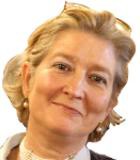
Funzione/Ruolo
Direttrice dell'Istituto di Astrofisica Spaziale e Fisica Cosmica di Milano (IASF)
Percorso professionale
Dopo la laurea in Fisica conseguita presso l'Università di Milano nel 1977, trascorre un periodo all'estero durante il quale è prima collaboratrice temporanea al Service d'Astrophysique del C.E.A. di Saclay (Francia) e poi Research Assistant presso la Catholic University of America al Goddard Space Flight Center della NASA. Nel 1978 entra a far parte, prima come borsista poi come ricercatrice, dell'Istituto di Fisica Cosmica Tecnologie Relative del CNR di Milano, poi confluito nell'Istituto Nazionale di Astrofisica (INAF). Continua la sua attività di studio e ricerca in Italia e all'estero partecipando a numerosi studi. Nel 1997 diventa professoressa a contratto dell'Università di Pavia e dal 2002 è Dirigente di Ricerca ed attualmente Direttrice dell'Istituto di Astrofisica Spaziale e Fisica Cosmica di Milano (IASF). Ha collaborato a diverse missioni spaziali internazionali dedicate all'astrofisica delle alte energie a cominciare dalla missione europea Cos-B. Oggi è coinvolta nella missione europea Integral, nella missione della NASA Swift, nella missione italiana AGILE e nella missione NASA Fermi, tutte in orbita e pienamente operative. Dal gennaio 2012 è responsabile per la partecipazione dell'INAF al Cherenkov Telescope Array. Il CTA coinvolge milletrecento scienziati di 32 Paesi ed è composto da due reti di telescopi che copriranno l'osservazione dell'intero cielo: il sito primario sarà nell'emisfero sud, in Cile, da dove è visibile la maggior parte della via Lattea, la nostra galassia; il secondo sito, per coprire il cielo nord, sarà nell'isola di La Palma e sarà dedicato all'osservazione delle sorgenti extragalattiche.
Risultati scientifici
Il suo campo d'interesse principale è il comportamento delle stelle di neutroni alle diverse lunghezze d'onda. È stata tra i primi a capire il ruolo fondamentale delle stelle di neutroni nell'astrofisica delle alte energie. In anni di sforzi volti all'identificazione della sorgente Geminga, riconosciuta come la prima pulsar senza emissione radio, ha messo a punto una strategia multilunghezze d'onda per l'identificazione delle sorgenti gamma galattiche. Durante le prime fasi della carriera i suoi campi d'interesse sono stati l'analisi e l'interpretazione dei dati di astronomia gamma raccolti dal satellite Cos-B e, dall'inizio dell'attività in astronomia X, l'analisi dei dati raccolti da Einstein e da EXOSAT. Successivamente, Patrizia Caraveo indaga l'astronomia multilunghezze d'onda, focalizzando in particolare la sua attenzione sull'astronomia ottica. A seguito di diverse campagne di osservazioni Patrizia Caravero e colleghi giungono alla scoperta e alla comprensione di Geminga, stella di neutroni isolata, la prima a non mostrare alcuna evidenza di emissione radio. Si apre così un nuovo campo di ricerca nell'astrofisica delle alte energie: lo studio delle sorgenti gamma non identificate diventato uno dei principali temi di ricerca da parte di diversi gruppi in tutto il mondo. Il gruppo di ricerca di Patrizia Caraveo, oltre a misurare il moto proprio di diverse stelle di neutroni, ha misurato lo spostamento parallattico di Geminga, ottenendo la prima misura ottica della distanza di una stella di neutroni isolata. Attualmente Caraveo coordina tra l'altro un programma riguardante lo studio delle sorgenti gamma non ancora identificate alla ricerca dei segni caratteristici delle stelle di neutroni. In effetti, la missione Fermi si è rivelato un efficace cacciatore di stelle di neutroni senza emissione radio e la famiglia delle stelle di neutroni simili a Geminga è arrivata a quasi cinquanta membri.
Attività editoriali e pubblicazioni
Patrizia Caraveo è autrice di numerose pubblicazioni scientifiche nazionali ed internazionali, con quasi 50.000 citazioni complessive. La lista completa è disponibile online all'indirizzo: https://fisica.unipv.it/personale/PersFiles/Publ_357.pdf.
Ha inoltre scritto 5 libri di divulgazione scientifica:
Sidereus Nuncius 2.0. I messaggeri celesti della nuova astronomia (Mondadori Università, 2021)
(con Giovanni Bignami) I marziani siam noi. All ricerca di un'altra terra (Zanichelli 2019)
Conquistati dalla Luna. Storia di un'attrazione senza tempo (Raffaello Cortina Editore)
L'universo violento (Lezioni di fisica, Corriere della sera, 2019)
Uomini e Donne: stessi diritti? (Castelvecchi editore, 2017)
Riconoscimenti e premi
Patrizia Caraveo fa parte dell'Unione Astronomica Internazionale, e ha condiviso con i colleghi dei team Swift, Fermi e AGILE, il premio Bruno Rossi della American Astronomical Society rispettivamente nel 2007, 2011 e 2012.
Grazie al successo di Geminga, nel 2009 è stata insignita del premio Nazionale Presidente della Repubblica "per i contributi dati alla comprensione dell'emissione di alta energia delle stelle di neutroni".
Nel marzo 2014 ha ricevuto lo "Outstanding Achievement Award" di Women in Aerospace-Europe.
A giugno 2014 Thomson Reuters l'ha inclusa nella lista degli "Highly Cited Researchers" per la disciplina "Space Science". Fa inoltre parte del Gruppo 2003.
Nel 2021 ha ricevuto il premio "Enrico Fermi" (ex aequo con la prof.ssa Elena Aprile) " per il suo ruolo di leader mondiale nel campo dell'emissione di alta energia delle stelle di neutroni e per il suo contributo all'identificazione di Geminga."

Funzione/Ruolo
Ricercatrice presso l’IBFM-CNR (Istituto di Bioimmagini e Fisiologia Molecolare – Consiglio Nazionale delle Ricerche) di Milano
Percorso professionale
Dopo la laurea in Fisica presso l'università di Milano nel 1993, ha conseguito una formazione scientifica nel settore della fisica applicata alla medicina, (più recentemente ai beni culturali e ambiente), in particolare in applicazioni della diagnostica per immagini combinata a tecniche computazionali avanzate. Dal 1997 è Ricercatrice presso l’Istituto di Bioimmagini e Fisiologia Molecolare del Consiglio Nazionale delle Ricerche (IBFM-CNR), presso cui, dal 2011, è anche Componente del Consiglio d’Istituto.Dal 2010 al 2016 è stata docente a contratto dell’Università di Milano-Bicocca. Ha maturato esperienze di responsabilità di ricerca attraverso la creazione e gestione di un proprio gruppo di ricerca presso l’IBFM-CNR, consolidatosi, nel 2011, in un Laboratorio di ricerca (Laboratorio di Integrazione&Innovazione in Imaging Molecolare, INLAB www.inlab.ibfm.cnr.it), che ospita attualmente 10 ricercatori con competenze nel settore della fisica delle bioimmagini, informatica, biologia e biotecnologia.
Risultati scientifici
Ha ottenuto importanti risultati scientifici in: 1) caratterizzazione fisica dei sistemi di imaging diagnostico, in particolare tomografia a emissione di positroni (PET), tomografia a emissione di fotoni singoli (SPECT), tomografia computerizzata (CT), risonanza magnetica (MRI), imaging a fluorescenza / bioluminescenza e spettroscopia nel vicino infrarosso (fNIRS), 2) sviluppo di metodi di acquisizione ed elaborazione di immagini diagnostiche per applicazioni mediche e culturali, 3) sviluppo di metodi e modelli per la correzione di effetti fisici, fonti di rumore negli studi di diagnostica per immagini (es. attenuazione, dispersione, effetto volume parziale), 4) sviluppo di metodi di quantificazione e estrazione di caratteristiche da immagini diagnostiche (ad esempio analisi di mappatura parametrica statistica, radiomica, analisi delle componenti principali, apprendimento macchina), 5) creazione di database di immagini mediche sintetiche per la convalida di metodi di elaborazione e quantificazione delle immagini mediche. Dal 2010 ha coordinato 13 progetti di ricerca scientifica finanziati su bandi competitivi o mediante contratti, per un finanziamento totale netto a fondo perduto pari a 2M€, e 12 progetti di ricerca in convenzione con IRCCS e Aziende Ospedaliere). Ha presentato i risultati delle sue ricerche in più di 50 seminari e lezioni in convegni nazionali e internazionali, università e istituti di ricerca. E’ co-inventrice di quattro software per l’estrazione e la quantificazione di biomarcatori da immagini e dati biomedici, in uso presso strutture sanitarie nazionali ed estere. Dal 2012 al 2015 è stata Mentore di due spin off nel settore delle tecnologie biomediche.
Attività editoriali e pubblicazioni
Ha al suo attivo 112 pubblicazioni scientifiche in riviste scientifiche ISI, tra le quali Science, Nucleic Acids Research, Theranostics, European Journal of Nuclear Medicine and Molecular Medicine, Cerebral Cortex; in oltre il 70% delle pubblicazioni è in posizione primaria (con ruolo di primo, corresponding o ultimo autore).
[2005] Berti A, Bottini G, Gandola M, Pia L, Smania N, Stracciari A, Castiglioni I, Vallar G. Shared cortical anatomy for motor awareness and motor control. Science, 309(5733):488-91.
[2014]Picchio M, Kirienko M, Mapelli P, Dell'Oca I, Villa E, Gallivanone F, Gianolli L, Messa C, Castiglioni I. Predictive value of pre-therapy (18)F-FDG PET/CT for the outcome of (18)F-FDG PET-guided radiotherapy in patients with head and neck cancer. Eur J Nucl Med Mol Imaging, 41(1):21-31.
[2015] Bertoli G, Cava C, Castiglioni I. MicroRNAs: New Biomarkers for Diagnosis, Prognosis, Therapy Prediction and Therapeutic Tools for Breast Cancer. Theranostics, 5(10):1122-43.
[2015] Salvatore C, Cerasa A, Battista P, Gilardi MC, Quattrone A, Castiglioni I; Alzheimer's Disease Neuroimaging Initiative. Magnetic resonance imaging biomarkers for the early diagnosis of Alzheimer's disease: a machine learning approach. Front Neurosci, 9:307. doi: 10.3389/fnins.2015.00307. eCollection 2015.
[2016] Colaprico A, Silva TC, Olsen C, Garofano L, Cava C, Garolini D, Sabedot TS, Malta TM, Pagnotta SM, Castiglioni I, Ceccarelli M, Bontempi G, Noushmehr H. TCGAbiolinks: an R/Bioconductor package for integrative analysis of TCGA data. Nucleic Acids Res, 44(8):e71. doi: 10.1093/nar/gkv1507.
[2017] Antunovic L, Gallivanone F, Sollini M, Sagona A, Invento A, Manfrinato G, Kirienko M, Tinterri C, Chiti A, Castiglioni I.[18F]FDG PET/CT features for the molecular characterization of primary breast tumors. Eur J Nucl Med Mol Imaging, 44(12):1945-1954.
[2017] Berti A, Della-Torre E, Gallivanone F, Canevari C, Milani R, Lanzillotta M, Campochiaro C, Ramirez GA, Bozzalla Cassione E, Bozzolo E, Pedica F, Castiglioni I, Arcidiacono PG, Balzano G, Falconi M, Gianolli L, Dagna L. Quantitative measurement of 18F-FDG PET/CT uptake reflects the expansion of circulating plasmablasts in IgG4-related disease.Rheumatology, 56(12):2084-2092.
[2018] Gargano M, Galli A, Bonizzoni L, Alberti R, Aresi N, Caccia M, Castiglioni I, Interlenghi M, Salvatore C, Ludwig N, Martini M. The Giotto's workshop in the XXI century: looking inside the “God the Father with Angels” gable. Journal of cultural heritage: https://doi.org/10.1016/j.culher.2018.09.016
[2019] Cantini L, Bertoli G, Cava C, Dubois T, Zinovyev A, Caselle M, Castiglioni I, Barillot E, Martignetti L. Identification of microRNA clusters cooperatively acting on Epithelial to Mesenchymal Transition in Triple Negative Breast Cancer.NAR, in press (Published on-line).
[2019] Musazzi L, Sala N, Tornese P, Gallivanone F, Belloli S, Conte A, Di Grigoli G, Fenghua C, Treccani G, Bazzini C, Castiglioni I, Nyengaard JR, Wegener G, Moresco RM, Popoli P. Acute inescapable stress rapidly increases synaptic energy metabolism in prefrontal cortex and alters working memory performance.Cerebral Cortex, in press.
Riconoscimenti e premi
Dal 2007 al 2009 è stata Tutor di Foreign Scientific Visitors per l'Agenzia Internazionale di Energia Atomica (IAEA).E’ valutatrice scientifica di progetti di ricerca per Istituzioni Internazionali (Engineering in Medical and Biology Society, Fundacao para a Cienca e a Tecnologia FCT–Portugal, French Institute National du Cancer, Poland National Science Center, Horizon2020).É revisora scientifica in riviste scientifiche internazionali nel settore delle bioimmagini e della diagnostica molecolare e svolge attività editoriale, in qualità di Associate Editor e Guest Editor. In particolare è stata Lead Guest Editor delloSpecial Issue “Frontiers in Biomarkers for theranostics” in Frontiers in Bioscience – Landmark, dello Special Issue “Frontiers from Radiomics in Molecular Imaging” in Contrast Media and Molecular Imaging, e dello Special Issue “Imaging biomarkers for the diagnosis and prognosis of neurodegenerative diseases” in Frontiers in Neuroscience.
Nel settembre 2021 viene nominata fra le 50 donne italiane di maggiore ispirazione per il mondo della tecnologia con il riconoscimento InspiringFifty for Italy.

Funzione/Ruolo
Direttrice di Ricerca dell’Istituto Nazionale di Fisica Nucleare (INFN) presso la Sezione di Torino.
Percorso professionale
Dopo la laurea in Fisica teorica a Torino nel 1984, ha ottenuto il PhD dalla State University of New York at Stony Brook nel 1989 e lavorato al CALTECH in California, per poi rientrare nel 1993 come Ricercatrice e docente presso il Politecnico di Torino. È dirigente di ricerca presso la Sezione di Torino dell'INFN, dove dal 2015 al 2022 ha coordinato il Gruppo di Fisica Teorica. La sua ricerca esplora le teorie quantistiche delle interazioni fondamentali e della gravità, con applicazioni allo studio dei buchi neri ed alla cosmologia. Dal 2017 guida un progetto di ricerca nazionale sulla Teoria dei campi e delle Stringhe. È stata team member dell’ERC “Superfields” e working group leader nel progetto europeo COST “The String Theory Universe”. E’ attiva nella promozione della dimensione di genere in Fisica Teorica e fra le fondatrici del gruppo GenHET presso il CERN. Collabora in diverse vesti a iniziative di diffusione della scienza con vari linguaggi, incluso quello teatrale; è infatti fra le ideatrici di La forza nascosta: scienziate nella fisica e nella storiata: scienziate nella fisica e nella storia e presidente dell’associazione Teatro&Scienza a Torino.
Risultati scientifici
La sua attività di ricerca ha riguardato la Fisica teorica delle alte energie. Si è dedicata alla costruzione di nuove teorie quantistiche che, estendendo la Relatività Generale di Einstein ed il Modello Standard per le particelle elementari, possano descrivere l'unificazione della gravità con le altre interazioni fondamentali fra particelle elementari. La sua attenzione si è focalizzata sulle strutture matematiche e sulle simmetrie che regolino l’interazione di spazio, tempo e materia. È esperta di modelli in cui lo spazio-tempo possiede più di 4 dimensioni, di teorie con invarianza conforme e di teorie di campo con supersimmetria: supergravità, teorie di stringa, teorie olografiche. Ha contribuito anche con le loro applicazioni allo studio dei buchi neri ed alla cosmologia.
I suoi risultati più rilevanti riguardano la costruzione di modelli generali di supergravità in 4 e 5 dimensioni spazio-temporali atti a descrivere l'interazione fra (super) gravità e materia, l’analisi delle loro simmetrie di dualità elettromagnetica, gli studi sulla consistenza del principio olografico e la descrizione di buchi neri in supergravità mediante equazioni di flusso.
Attività editoriali e pubblicazioni
Le sue pubblicazioni comprendono oltre 60 lavori di ricerca pubblicati su riviste internazionali ed un volume specialistico nel campo della fisica teorica delle alte energie e della fisica matematica. Di seguito, una selezione.
[2019] Castellani L., Ceresole A., D'Auria R., Fré P. Tullio Regge: An Eclectic Genius: From Quantum Gravity to Computer Play. World Scientific, ISBN 978-981-12-1343-4, doi 10.1142/11643.
[2014] Ceresole A., Dall'Agata G., Ferrara S., Trigiante M., Van Proeyen A. A search for an N=2 inflaton potential, Fortsch. Phys. 62 (2014) 584 [arXiv:1404.1745 [hep-th]].
[2007] Ceresole A., Dall'Agata G. Flow equations for non-BPS extremal black holes, JHEP 0703 (2007) 110 [arXiv:hep-th/0702088].
[2006] Ceresole A., Dall'Agata G., Giryavets A., Kallosh R., Linde A. Domain walls, near-BPS bubbles, and probabilities in the landscape, Phys. Rev. D 74 (2006) 086010 [arXiv:hep-th/0605266].
[2000] Ceresole A., Dall'Agata G. General Matter Coupled N=2, D = 5 Gauged Supergravity, Nucl. Phys. 585 (2000)143{170, [hep-th/0004111].
[2001] Ceresole A., Dall'Agata G., Kallosh R., Van Proeyen A. Hypermultiplets, Domain Walls and Supersymmetric Attractors, Phys. Rev. D 64 (2001) 104006 (23 pages) [arXiv:hep-th/0104056].
[2000] Ceresole A., Dall'Agata G., D'Auria R., Ferrara S. Spectrum of type IIB supergravity on AdS(5)xT11: Predictions on N = 1 SCFT's" , Phys. Rev. D61 066001-19, [hep-th/9905226].
[1997] Andrianopoli L., Bertolini M., Ceresole A., D'Auria R., Ferrara S., Fre P., Magri T. N=2 Supergravity and N=2 Super Yang-Mills Theory on General Scalar Manifolds: Symplectic Covariance, Gaugings and the Momentum Map, J. Geom. Phys. 23, 111 (1997), [hep-th/9605032].
[1995] Cadavid A. C., Ceresole A., D'Auria R., Ferrara S. 11-Dimensional Supergravity Compactified on Calabi Yau Threefolds, Phys. Lett B357 (1995) 76-80, [hep-th/9506144].
[1995] Ceresole A., D'Auria R., Ferrara S., Van Proeyen A. Duality Transformations in N=2 Supersymmetric Yang Mills Theories coupled to Supergravity, Nucl. Phys. B444 (1995) 92-124, [hep-th/9502072].
[1992] Ceresole A., D'Auria R., S. Ferrara S., Lerche W., Louis J. Picard-Fuchs equations and special geometry, Int. J. Mod. Phys. A, 8 (1993) 79-114 [hep-th/9204035 [hep-th]].
[1985] Ceresole A., Frè P., Nicolai H. Multiplet Structure and Spectra of N=2 Supersymmetric Compactifications, Class.Quant.Grav. 2 (1985) 133.
Riconoscimenti e premi
Fulbright e Angelo Della Riccia grantist, Caltech Prize Fellowship in Theoretical Physics.
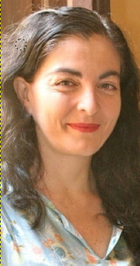
Funzione/Ruolo
Professoressa associata di Fisica all'Università di Pisa
Percorso professionale
Dopo aver conseguito la laurea in Fisica all’Università di Pisa nel 1992 e il PhD alla Scuola Normale Superiore (SNS) in1996, entrambi cum laude, alla SNS è stata postdoc e quindi ricercatrice (1998-2002, 2004-2007), lavorando tra il 2002 e il 2004 con la professora Anna Nobili. Dal 2007 è professora associata all’Università di Pisa (abilitata come ordinaria). Insegna due corsi di fisica di base per Farmacia, uno specialistico per la magistrale e il dottorato di Fisica, e la Fisica di tutti i giorni per insegnare a insegnare la fisica. Contribuisce al Centro Interdisciplinare di Scienze per la Pace, al Centro Interdipartimentale per Aggiornamento, Formazione e Ricerca Educativa, e al gruppo Ricerca e Innovazione Responsabile di UNIPI.
Ha coordinato progetti di ricerca disciplinare e didattica, finanziati da CINECA, SNS, ASI, INFN, MIT-UNIPI, KITP, Erasmus+ e CISIA.
Ha svolto parte della sua attività di ricerca in Istituzioni scientifiche internazionali, tra cui: IRC Cambridge, TU-Eindhoven, Institut Poincaré (Paris), CNRS (Grenoble), University of Auckland, Strathclyde University (UK), ICTP, ECT e CRS-BEC (Trento), e Los Alamos National Labs, Aspen Center for Physics, Kavli Institute for Theoretical Physics, Stanford, Harvard e MIT (US). Lunghi e solidi legami sono con il JILA (Boulder, US), dove ha fatto ricerca sulla fisica dei fluidi atomici quantistici per periodi di 1-2 mesi quasi ogni anno dal 1995 nei gruppi di Murray Holland o Debbie Jin, attorno agli esperimenti pioneri dei Nobel laureates Carl Wiemann ed Eric Cornell.
Risultati scientifici
Ha sviluppato la teoria bipolaronica per la superconduttività ad alta temperatura critica, di cui a una monografia, contribuendo al contempo allo studio di bosoni carichi fortemente correlati. A partire dall’osservazione nel 1995 al JILA e MIT della condensazione di Bose-Einstein in atomi ultrafreddi (cioè a miliardesimi di Kelvin dallo zero assoluto), si è dedicata allo studio di questi sistemi come piattaforma per ingegnerizzare tecnologie quantistiche basate sul controllo di temperatura, interazioni e dimensioni spaziali. Per questo, ha anche sviluppato metodi di simulazione e teorici, come la teoria del funzionale di densità dipendente dal tempo per superfluidi. Il lavoro più rilevante e citato è l’ideazione con Murray Holland della teoria della superfluidità fermionica risonante, successivamente osservata da Debbie Jin al JILA.
In un felice parentesi di ricerca nel gruppo di Anna Nobili, ha sviluppato un ambiente di simulazione per il test Galileo Galilei on the Ground del principio di equivalenza, con corpi macroscopici. Questa interdisciplinarietà continua a caratterizzare l’attività di ricerca, in due direzioni: tecnologie quantistiche per la fisica fondamentale con interferometria atomica (è coautrice di diversi proposals tra i quali Atomic Experiments for Dark Matter and Gravity Exploration in Space per la call Voyage2050 di ESA); lo sviluppo di una “quantum black box” per risolvereproblemi quantistici che, mediante ideazione di videogiochi, modellizzazione del comportamento umano, e uso di machine learning, integra la potenza di creatività/intuizione della mente umana con quella di macchine (classiche o quantistiche). Per questo coordina con Sabrina Maniscalco (Turku University) il proposal interdisciplianre Integrating Human and Machine Minds for Quantum Technologies (IQHuMinds) tra fisica quantistica, neuroscienze, informatica, gamification, con partners europei e US di Università (Turku e Pisa, ICFO, JILA) e aziende di settore (VIS, MiTale, QuSide, IBM-Zurich, Unity).
Associa alla ricerca disciplinare quella didattica per la fisica di outreach. Ha ideato diversi format ed eventi per radio (tra cui Piacere, Scienza! con Sara Maggi), video, e spettacoli di arte e scienza. Ha collaborato suscienza&società con Rai-Radio3, Repubblica, Focus Junior, Scienzainrete, Ingenere, Corriere della Sera, DireDonne.
Attività editoriali e pubblicazioni
[2019] Lucchesi L and Chiofalo ML, Many-body Entanglement of Fermi Gases with Short-Range Interactions. Phys. Rev. Lett. 123: 60406.
[2018] Colella E, Citro R, Barsanti M, Rossini D, and Chiofalo ML, Quantum Phases of Spinful Fermi Gases in Optical Cavities. Phys. Rev. B 97: 134502.
[2014] Iadonisi G, Cantele G, Chiofalo ML, Introduction to Solid State Physics and Crystalline Nanostructures, SPRINGER VERLAG- Italia (2014) 685 pp.
[2008] Ivanov V, Alberti A, Schioppo M, Ferrari G, Artoni M, Chiofalo ML and Tino G, Coherent delocalization of atomic wavepackets in driven lattice potentials. Phys. Rev. Lett. 100: 43601.
[2007] Citro R, Orignac E, de Palo S, and Chiofalo ML, Evidence of Luttinger liquid behavior in one-dimensional dipolar quantum gases, Phys. Rev. A Rapid Comm. 75: 51602.
[2006] Chiofalo ML, Giorgini S, and Holland MJ, Released Momentum Distribution of a Fermi Gas in the BCS-BEC Crossover. Phys. Rev. Lett. 97: 070404.
[2003] Nobili AM, Bramanti D, Comandi GL, Toncelli R, Polacco E, and Chiofalo ML, GALILEO GALILEI-GG: design, requirements, error budget and significance of the ground prototype. Phys. Lett. A.318: 172.
[2001] Holland MJ, Kokkelmans SJJMF, Chiofalo ML and Walser R, Resonance superfluidity in a quantum degenerate Fermi gas. Phys. Rev. Lett. 87: 120406.
[2001] Chiofalo ML and Tosi MP, Time-dependent density-functional theory for superfluids. Europhys. Lett. 53:162.
[2001] Burger S, Cataliotti FS, Fort C, Minardi F, Inguscio M, Chiofalo ML and Tosi MP, Superfluid and Dissipative Dynamics of a Bose-Einstein Condensate in a Periodic Optical Potential. Phys. Rev. Lett. 86: 4447.
[1998] Iadonisi G, Schrieffer RJ and Chiofalo ML Eds., Models and Phenomenology for conventional and high-Tcsuperconductivity, Proceedings del CXXXVI Corso della Scuola Internazionale di Fisica "Enrico Fermi", IOS.
[1997] Holland M, Jin J, Chiofalo ML and Cooper J, Emergence of interaction effects in Bose--Einstein condensation. Phys. Rev. Lett. 78: 3801.
Riconoscimenti e premi
Ha ricevuto il premio per giovani della Società Italiana di Fisica (1997). Il lavoro sulla Teoria del funzionale di densità dipendente dal tempo per superfluidi è stato selezionato come Highlight INFM (1998). Ha ricevuto i Premi Cultura della solidarietà (Pistoia, 2014) e Donne che ce l’hanno fatta (Sportello Donna di Pavia e Fondazione Gaia, Milano, 2016, evento Pechino+20). Secondo Ladynomics, è tra le 150 femministe più influenti del 2019.
Ha organizzato numerosi eventi come parte del comitato scientifico, tra cui la CXXXVI International School of Physics Enrico Fermi (Varenna 1997, sulla superconduttività ad alta temperatura con i direttori R. J. Schrieffer(Nobel laureate) e G. Iadonisi. Ha ideato e diretto il Festival MusicalMente per il Campus delle arti in Sangemini, e presiede la serie di Conferenze Quantum gases, Fundamental interactions, and Cosmology (2017-). È parte dei comitati scientifici di CISP Magazine, Collana Cultura e formazione (D. Pardini e M. Agujari eds.), e Premio Cosmos per la divulgazione scientifica presieduto da Gianfranco Bertone. Ha svolto funzioni di valutatrice tra pari per VQR 2011-2014, ERC Starting Grant 2019, e per Istituzioni accademiche (Stanford, Harvard, LKB Paris). È componente del board di Photonics. Svolge attività di referee per Physical Review (Letters, A, B, E, X), Nature, NJP, EPJ, Europhysics Letters.
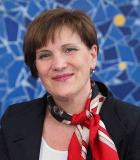
Funzione/Ruolo
Presidente e socia fondatrice di Talent4Rise, Milano
Percorso professionale
Nel 1986 consegue la Laurea in Fisica Elettronica e Sistemica, presso l'Università degli Studi di Milano con una tesi sugli effetti delle piogge acide svolta presso il CRTN (Centro di Ricerca Termiche e Nucleari dell'ENEL). Nel 1987 entra nel Consorzio Italtel Telesis nel ruolo di Proposal Manager per lo sviluppo delle reti di monitoraggio ambientale e dei primi modelli matematici per la previsione della qualità dell'aria (progetto DISIA Ministero dell'Ambiente). Dal 1988 al 1997 è Responsabile del Sottosistema Ambiente nel Consorzio 5T. Nel 1997 entra in Italtel S.p.A. con il ruolo di Proposal Manager e partecipa alla gara ministeriale per l'assegnazione del terzo operatore mobile (Wind). In seguito, dal 2000 al 2013, è International Bid and Contract Manager e contribuisce alla realizzazione d'importanti reti intranet (EINET-Esercito Italiano), la dorsale IP della Rete Italiana della Ricerca e dell'Università (Consorzio GARR) e VoIP per operatori internazionali (SNCF, Société Nationale des Chemins de fer Français) e italiani (CGIL Piemonte, Acciaieria Cogne di Aosta e per lo stabilimento Barilla). Nel 2013 fonda l'associazione Talent4Rise.
Risultati scientifici
Paola Corradi si occupa da quasi trent'anni di sviluppo di reti ICT per imprese e pubblica amministrazione, di soluzioni cloud, di start-up di nuovi servizi e nuovi mercati. I suoi attuali interessi riguardano le applicazioni di ICT innovative per le smart cities e le relazioni internazionali come leva di sviluppo in un mondo globalizzato. Sostenendo l'importanza del valore condiviso tra pubblica amministrazione, aziende profit e no-profit, per attivare circuiti cooperativi e di feedback positivo e lo sviluppo delle nuove tecnologie digitali come strumento per la crescita economica, Paola Corradi partecipa a Expo 2015 con una serie di workshop in Cascina Triulza e di mostre culturali sui temi di Expo (Mostra Epica di Expo in Città - Pastori dell'alpe: 100 storie, 100 volti per nutrire il Pianeta). E porta a Expo 2015 l'originale progetto Rise2Up, il cui obiettivo primario è dare visibilità alle buone pratiche della aziende italiane, presenti in Italia e all'estero, che si distinguono per Qualità e Sicurezza, Educazione Alimentare, Originalità e Biodiversità, Eco-sostenibilità, Salute, WEB2.0, Internazionalità, Tradizione e Conservazione e Innovazione. Nell'aprile del 2016 organizza una missione imprenditoriale a Dubai sui temi dell'innovazione. Oggi promuove, con il supporto della Direzione di Talent4Rise, workshop scientifici all'interno del programma Human Factory Day di Fondazione Triulza.
Riconoscimenti e premi
Il progetto Rise2Up è stato premiato dalla Camera di Commercio di Milano tra i migliori progetti presentati ai Tavoli Tematici di Expo2015. Paola Corradi è componente del Consiglio Generale di Fondazione Triulza come socia fondatrice.

Funzione/Ruolo
Dirigente di Ricerca dell’Istituto Nazionale di Fisica Nucleare, Direttrice del “Galileo Galilei Institute for Theoretical Physics” Arcetri, Firenze (Italia)
Percorso professionale
Laureata in Fisica all’Università degli Studi di Firenze, dopo un PhD alla Scuola Internazionale di Studi Avanzati (SISSA) per il settore Particelle Elementari, diventa Visiting Scientist presso l’Università di Ginevra ed il Cern, Professoressa a contratto presso la Facoltà di Scienze dell’Educazione e la Facoltà di Fisica e Astronomia dell’Università di Firenze, Dirigente di Ricerca presso la Sezione di Firenze dell’Istituto Nazionale di Fisica Nucleare, Membro del Plenary European Committee for Future Accelerators (ECFA), Direttrice del Galileo Galilei Institute for Theoretical Physics, Arcetri (Firenze).
Risultati scientifici
La sua ricerca si svolge nel campo della fisica delle particelle di alta energia. È da sempre interessata a scenari di fisica “oltre” il Modello Standard che possano risolvere alcuni dei problemi ancora aperti proponendo nuovi modelli e studiando le loro possibili manifestazioni dirette e indirette agli acceleratori di particelle presenti e futuri. Avendo lavorato a lungo sulla costruzione di teorie effettive, ha dato contributi sostanziali alla formulazione di scenari di Higgs composto ma anche alla analisi delle loro implicazioni fenomenologiche. Dopo la scoperta del bosone di Higgs nel 2012, molte domande sono ancora senza risposta: si tratta di uno scalare fondamentale? È il solo responsabile della rottura di simmetria elettrodebole e della generazione di massa? È unico o è parte di un settore di Higgs esteso? È un “portale” verso una nuova dinamica nascosta? Se la risposta a questa ultima domanda è affermativa, allora il bosone di Higgs potrebbe essere una particella composta, uno pseudo-bosone di Nambu-Goldstone associato alla rottura di una simmetria globale; un “nuovo pione” che potrebbe fornire una soluzione al problema della gerarchia. Recentemente lo studio di modelli di dinamica composta nell’universo primordiale ha catturato la sua attenzione, in particolare la possibilità di una forte transizione di fase elettro-debole del primo ordine che può essere responsabile della bariogenesi in modelli di Higgs composto. Un ulteriore aspetto interessante di questo scenario è la generazione di segnali di onde gravitazionali che potrebbero essere osservate ai futuri interferometri.
Attività editoriali e pubblicazioni
[2022] De Curtis S., Delle Rose L., Guiggiani A., Muyor A.G., Panico G., Bubble wall dynamics at the electroweak phase transition, Journal of High Energy Physics 03, 163.
[2019] De Curtis S., Delle Rose L., Panico G., Composite dynamics in the early Universe, Journal of High Energy Physics 12, 149.
[2013] Barducci D, Belyaev A, De Curtis S, Moretti S, Pruna G M. Exploring Drell-Yan signals from the 4D Composite Higgs Model at the LHC, Journal of High Energy Physics 04, 152.
[2012] De Curtis S, Redi M, Tesi A. The 4D composite Higgs, Journal of High Energy Physics 04, 042
[2009] Cacciapaglia G, Deandrea A, De Curtis S. Nearby resonances beyond the Breit-Wigner approximation, Physics Letters B 682: 43-49.
[2004] Casalbuoni R, De Curtis S, Dominici D. Moose models with vanishing S parameter, Physical Review D, PARTICLES, FIELDS, GRAVITATION, AND COSMOLOGY, 70: 055010.
[1999] Casalbuoni R, De Curtis S, Dominici D, Gatto R. SM Kaluza-Klein excitations and electroweak precision tests, Physics Letters B462: 48-54.
[1996] Casalbuoni R, Dominici D, Deandrea A, Gatto R, De Curtis S, Grazzini M. Low energy strong electroweak sector with decoupling, Physical Review D 53: 5201-5221.
[1993] Altarelli G, Casalbuoni R, De Curtis S, Dibartolomeo N, Gatto R, Feruglio F. Extended Gauge-Modrels and Precision Electroweak Data, Physics Letters B 318: 139-147.
[1989] Barducci A, Casalbuoni R, De Curtis S, Gatto R, Pettini G. Chiral-Symmetry Breaking in QCD at Finite Temperature and Density, Physics Letters B 231: 463-470.
[1989] Casalbuoni R, De Curtis S, Dominici D, Feruglio F, Gatto R. Non-Linear Realization of Supersymmetry Algebra from Supersymmetric Constraint, Physics Letters B220: 569-575.
[1988] Barducci A, Casalbuoni R, De Curtis S, Dominici D, Gatto R. Dynamical Chiral-Symmetry Breaking and Determination of the Quark Masses, Physical Review D 38: 238-278.
[1985] Casalbuoni R, De Curtis S, Dominici D, Gatto R. Effective Weak Interaction Theory with a Possible New Vector Resonance From a Strong Higgs Sector, Physics Letters, B 155: 95-99.
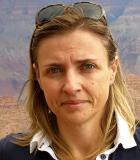
Funzione/Ruolo
Prima ricercatrice dell'Istituto Nazionale di Astrofisica (INAF) sezione di Roma
Percorso professionale
Dopo aver conseguito la laurea in Fisica all'università La Sapienza di Roma nel 1992, prosegue la sua formazione conseguendo nel 1997 un dottorato di ricerca in Astronomia svolto presso il reparto di Planetologia dell'IASF di Roma, l'Osservatorio di Parigi e la stessa università. Nel 1996 grazie a una borsa di studio del CNR spende un anno presso il loro Istituto di Astrofisica Spaziale. Nel 1998 è ricercatrice a tempo determinato presso lo stesso Istituto di Astrofisica Spaziale del CNR, per diventare dal 2001 ricercatrice a tempo indeterminato del CNR, oggi Istituto di Astrofisica e Planetologia Spaziali dell'INAF.
Risultati scientifici
Gli interessi di ricerca di Maria Cristina De Sanctis comprendono principalmente tre campi di studio: i corpi minori del sistema solare e delle superfici planetarie, l'evoluzione termica di corpi del sistema solare, la strumentazione per missioni spaziali. Nello specifico ha analizzato i dati provenienti da osservazioni telescopiche, spaziali e di laboratorio; attraverso queste analisi è stato possibile indagare la composizione di comete e asteroidi, della superficie della Luna e di Mercurio. In particolare ha studiato le caratteristiche mineralogiche di asteroidi tramite osservazioni da terra e da spazio, nonché le emissioni dei gas cometari tramite osservazioni ad alta risoluzione spettrale. Nell'ambito dell'evoluzione termica, ha studiato i corpi ghiacciati del sistema solare, sviluppando un codice numerico complesso che permette di simulare i processi di differenziazione ed evoluzione di tali oggetti (comete, KBOs, Centauri, asteroidi). Per studiare l'evoluzione di tali oggetti è stato messo a punto un codice numerico piuttosto complesso che permette di indagare i processi di differenziazione di corpi ghiacciati, come i nuclei cometari, e non, come gli asteroidi. Questo codice è uno dei più completi esistenti e rappresenta un riferimento nella comunità scientifica internazionale. Maria Cristina De Sanctis ha inoltre sviluppato strumentazione per missioni spaziali, spettrometri a immagine e camere multi spettrali, allo scopo di permettere lo studio delle composizioni degli oggetti del sistema solare. In tale ambito ha seguito lo sviluppo d'interi progetti, in qualità di responsabile o vice responsabile, occupandosi del coordinamento scientifico e tecnico delle attività del team e delle relazioni con il team industriale e con il team ESA o NASA. Nell'ambito della missione Rosetta, ha collaborato alla proposta di uno spettrometro ad immagine, VIRTIS, che è stato selezionato per il payload di Rosetta. In particolare è stata curata la definizione degli obiettivi scientifici e dei requisiti strumentali. Caratteristica principale di questo strumento è avere la possibilità di immagine contemporaneamente all'acquisizione di spettri a media/alta risoluzione. Lo studio delle superfici di asteroidi è stato fatto anche tramite i dati dello spettrometro VIR, di cui è responsabile, a bordo della sonda NASA Dawn che ha osservato sia Vesta che il pianeta nano Cerere. Per l'esplorazione di Marte ha collaborato a diverse proposte in ambito NASA ed ESA. Lo spettrometro a immagini miniaturizzato MA_MISS è attualmente parte del payload della missione ESA Exomars 2020 ma era stato anche selezionato per NASA Mars Sample Return 2003 Lander Mission (MARS 2003). Sempre nell'ambito ESA, è co-investigator dello strumento MAJIS sulla sonda JUICE per lo studio del sistema di Giove e dello strumento SIMBIO-SYS sulla sonda Bepi-Colombo, dedicata allo studio di Mercurio.
Attività editoriali e pubblicazioni
Autrice di più di 180 pubblicazioni su riviste internazionali fra cui:
(2016) De Sanctis MC, Raponi A, Ammannito E, Ciarniello M, Toplis MJ, McSween HY, Castillo-Rogez JC, et al. Bright carbonate deposits as evidence of aqueous alteration on (1) Ceres. Nature, 536, 7614:54-57.
(2016) Filacchione G, De Sanctis MC, Capaccioni F, Raponi A, Tosi F, et al. Exposed water ice on the nucleus of comet 67P/Churyumov-Gerasimenko. Nature, 529, 7586:368-372.
(2016) Russell CT, Raymond CA, Ammannito E, Buczkowski DL, De Sanctis MC, Hiesinger H, Jaumann R, Konopliv AS, et al. Dawn arrives at Ceres: Exploration of a small, volatile-rich world. Science, 353 (6303):1008-1010.
(2016) Combe JP, McCord TB, Tosi F, Ammannito E, Carrozzo FG, De Sanctis MC, Raponi A, Byrne S, et al. Detection of local H2O exposed at the surface of Ceres. Science, 353, 6303, aaf3010.
(2016) Ammannito E, DeSanctis MC, Ciarniello M, Frigeri A, Carrozzo FG, et al. Distribution of phyllosilicates on the surface of Ceres. Science, 353 (6303).
(2016) Buczkowski DL, Schmidt BE, Williams DA, Mest SC, Scully JEC, Ermakov AI, Preusker F, Schenk P, Otto KA, Hiesinger H, O'Brien D, Marchi S, Sizemore H, Hughson K, Chilton H, Bland M, Byrne S, Schorghofer N, Platz T, Jaumann R, Roatsch T, Sykes MV, Nathues A, De Sanctis MC, et al. The geomorphology of Ceres. Science, 353,6303, aaf4332.
(2015) De Sanctis MC, Ammannito E, Raponi A, Marchi S, McCord TB, McSween HY, Capaccioni F, Capria MT, Carrozzo FG, Ciarniello M, et al. Ammoniated phyllosilicates with a likely outer Solar System origin on (1) Ceres. Nature, 528,7581:241-244.
(2015) De Sanctis MC, Capaccioni F, Ciarniello M, Filacchione G, Formisano M, Mottola S, Raponi A, Tosi F, Bockelée-Morvan D, Erard S, et al. The diurnal cycle of water ice on comet 67P/Churyumov-Gerasimenko. Nature,525,7570:500-503.
(2013) Ammannito E, De Sanctis MC, Palomba E, Longobardo A, Mittlefehldt DW, McSween HY, et al. Olivine in an unexpected location on Vesta's surface. Nature, 504(7478).122-125.
(2012) De Sanctis MC, Ammannito E, Capria MT, Tosi F, Capaccioni F, Zambon F, Carraro F, Fonte S, Frigeri A, Jaumann R, et al. Spectroscopic Characterization of Mineralogy and Its Diversity Across Vesta. Science, 336(6082), 697.
È inoltre autrice del libro Heat and Gas Diffusion in Comet Nuclei (International Space Science Institute, 2006).
Fa parte dell'editorial board del giornale Space Science Review.
Riconoscimenti e premi
Maria Cristina de Sanctis ha ricevuto numerosi premi e riconoscimenti.
Nel 2004, il Premio scientifico ESA “Outstanding contribution to Rosetta Mission”.
Nel 2008, il Premio NASA Achievement “Dawn Science Payload”.
Nel 2009, il Premio NASA Achievement “DAWN post-lunch payload characterization and calibration activities”.
Nel 2012, il Premio NASA Achievement “Exceptional and Succesful execution of the DAWN at Vesta”.
Nel 2013, il Premio NASA Achievement "Dawn science data analysis at Vesta”.
Nel 2015, il Premio scientifico ESA “Outstanding scientific contribution to VEX Mission”.
Nel 2016, il Premio scientifico ESA “Outstanding scientific contribution to Rosetta Mission”.
Nel 2017, il prestigioso riconoscimento NASA Exceptional Scientific Achievement Medal.
L'asteroide 17899 Mariacristina è stata chiamata così in suo onore.
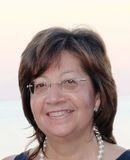
Area STEM: Fisica
Competenze: fisica delle particelle elementari, fisica subnucleare, rivelatori di particelle
Parole chiave: acceleratori, bosone di higgs, bosone w, bosone z, calorimetri, CERN, collisioni protone-protone, esperimento atlas, fisica delle alte energie, infn, lhc, modello standard, rivelatori di particelle, spettrometro a muoni, tracciatori a gas, tracciatori a stato solido
Regione: Lazio
Funzione/Ruolo
Professoressa ordinaria di Fisica Generale presso il Dipartimento di Fisica dell'Università di Roma Tor Vergata, direttrice della sezione INFN di Roma Tor Vergata, responsabile del gruppo INFN-ATLAS a Tor Vergata, componente del Collegio dei docenti del Dottorato in Fisica
Percorso professionale
Dopo aver conseguito la laurea in Fisica nel 1980 all'Università La Sapienza di Roma, prosegue la sua formazione presso il CERN di Ginevra e il laboratorio americano di Brookhaven. Nel febbraio 1984 viene assunta come ricercatrice universitaria presso la Facoltà di Scienze Matematiche e Fisiche dell'Università di Roma Tor Vergata. Svolge in seguito altri periodi di studio e di ricerca in università e centri di ricerca stranieri quali: l'Università di Harward (USA), il laboratorio di Oak Ridge (USA), il CERN e l'Università Albert-Ludwigs di Friburgo (D). Dal 1999 al 2013 è professoressa associata presso il Dipartimento di Fisica dell'Università di Roma Tor Vergata e dal 2013 è professoressa ordinaria nella stessa Università. Nell'ambito della Collaborazione ATLAS ricopre vari incarichi di responsabilità: presidente dello Speakers Committee, componente del Pubblication Committee, dello Steering Group dei muoni e dell'Advisory Board del Collaboration Board. Dal 2011 al 2013 coordina i ricercatori italiani che lavorano all'esperimento ATLAS. Dal luglio 2013 è la direttrice della Sezione di Roma Tor Vergata dell'Istituto Nazionale di Fisica Nucleare.
Risultati scientifici
La sua attività di ricerca si svolge principalmente attraverso la partecipazione a esperimenti presso macchine acceleratrici al CERN di Ginevra per lo studio delle collisioni protone-protone a 63 gigaelettronvolt ( GeV ) (esperimento R807 all'ISR), protone- antiprotone a 630 GeV (esperimento UA1 al ppbar Collider, che ha prodotto la scoperta delle particelle fondamentali W e Z), pione-nucleone a 26 GeV nel centro di massa al proto-sincrotrone SPS (esperimento WA92) per la ricerca di particelle con beauty. In seguito si interessa alla sperimentazione al Large Hadron Collider (LHC) del CERN, partecipando ai gruppi di lavoro dell'Ente Europeo per i Futuri Acceleratori (ECFA) e al programma RD5 di ricerca e sviluppo per i rivelatori a muoni all'LHC. Nell'ambito di tale programma contribuisce allo sviluppo del rivelatore RPC (Resistive Plate Chamber) come camere di trigger a muoni ad alta risoluzione temporale per gli esperimenti a LHC. Dal 1992 partecipa all'esperimento ATLAS al CERN, una collaborazione internazionale di circa 180 gruppi di ricerca, dei quali 14 italiani, che nel 2012 ha scoperto, insieme all'esperimento CMS, il Bosone di Higgs.
Attività editoriali e pubblicazioni
È autrice di oltre 800 pubblicazioni scientifiche fra cui:
(2017) Atlas Collaboration. Evidence for the 𝐻→𝑏𝑏⎯ decay with the ATLAS detector, JHEP 1712 024.
(2013) Atlas Collaboration. Measurements of Higgs boson production and couplings in diboson final states with the ATLAS detector at the LHC. Physics Letters B, 726:1-3, 88-119.
(2013) Atlas Collaboration. Evidence for the spin-0 nature of the Higgs boson using ATLAS data. Physics Letters B, 726:1-3, 120-144.
(2012) Atlas Collaboration. Observation of a new particle in the search for the Standard Model Higgs boson with the ATLAS detector at the LHC. Physics Letters B, 716: 1, 1-29.
(2012) Atlas Collaboration. Combined search for the Standard Model Higgs boson using up to 4.9 fb(-1) of pp collision data at root s=7 TeV with the ATLAS detector at the LHC. Physics Letters B, 710: 1, 49-66.
(2012) Atlas Collaboration. Search for the Standard Model Higgs Boson in the Diphoton Decay Channel with 4.9 fb(-1) of pp Collision Data at root s=7 TeV with ATLAS. Physical Review Letters, 108:11,111803.
(2008) Aad G, Abat E, Abdallah J, et al. The ATLAS Experiment at the CERN Large Hadron Collider. Journal Of Instrumentation, 3, S08003.
(1990) Albajar C, Albrow MG, Allkofer OC, et al. A Study of the General-Characteristics of Proton Antiproton Collisions at square-Root s=0.2 to 0.9 TeV. Nuclear Physics B, 335: 2, 261-287.
(1987) Albajar C, Albrow MG, Allkofer OC, et al. Search for B0-Bbar0 Oscillations at the CERN Proton-Antiproton Collider. Physics Letters B, 186: 2, 247-254
(1983) Arnison G, Astbury A, Aubert B, et al. Experimental-observation of isolated large transverse energy electrons with associated missing energy at square-root-s=540 GeV. Physics Letters B, 122:1, 103-116.
(1983) Arnison G, Astbury A, Aubert B, et al. Experimental-Observation of Lepton Pairs of Invariant Mass Around 95 GeV/c^2 at the CERN SpS Collider. Physics Letters B, 126:5, 398-410.
Riconoscimenti e premi
Nel 1987 riceve il Premio Società Italiana di Fisica (SIF) di operosità scientifica, nel 2013 il Premio della Società Europea di Fisica (EPS) in quanto componente della Collaborazione ATLAS e nel 2016 il Premio Cajeta 2016 conferito a donne che abbiano giovato alla società in generale e dato lustro al nome della città di Gaeta.
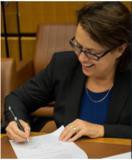
Funzione/Ruolo
Professoressa di Economia dello Spazio e Direttrice dello Space Economy Evolution Lab (SEE Lab) presso la School of Management dell'Università Bocconi di Milano
Percorso professionale
Dopo aver conseguito nel 1984 la laurea in Fisica con indirizzo Astrofisica e Fisica Spaziale presso l'Università La Sapienza di Roma, nel 1986 entra a far parte del Piano Spaziale Nazionale chiamato poi ASI (Agenzia Spaziale Italiana). Nel 1989 è delegata italiana presso l'Agenzia Spaziale Europea (ESA) per la Stazione Spaziale Internazionale (ISS). Nel 2001 diventa responsabile per l'ASI del coordinamento della missione Marco Polo. Dall'anno successivo fino al 2008 è responsabile del settore Osservazione dell'Universo, sempre presso l'Agenzia Spaziale Italiana. Nel 2009 promuove la leadership femminile nel settore dell'aerospazio e co-fonda l'associazione Women in Aerospace Europe, di cui è presidente fino al 2016. E' United Nations International Gender Champion dal 2017. Dal marzo 2014 fino al marzo 2022 è direttrice dell'Ufficio per gli Affari dello Spazio Extra-Atmosferico delle Nazioni Unite (UNOOSA), con sede a Vienna.
Nel marzo 2022 viene nominata direttrice dello Space Economy Evolution Lab (SEE Lab) presso la School of management dell'Università Bocconi di Milano.
Ha insegnato in diverse università, tra cui George Washington University, New York University Abu Dhabi e LUISS.
E' membro del World Economic Forum Global Future council on Space, del CDA di RINA SPA, e presidente del loro Comitato ESG, e membro del Consiglio Scientifico di Criptaliae per lo sviluppo dello spazioporto di Grottaglie.
Risultati scientifici
Simonetta Di Pippo è considerata una delle maggiori esperte in cooperazione internazionale nel settore aerospaziale. Come direttrice dell'Ufficio per gli Affari dello Spazio Extra-Atmosferico delle Nazioni Unite (UNOOSA), dal 2014 al 2022, ha elaborato strategie, politiche e supervisionato tutte le attività svolte dall'Ufficio, assicurandone lo sviluppo conforme al mandato rispettivamente dell'Assemblea Generale delle Nazioni Unite e del Comitato sugli usi pacifici dello spazio extra-atmosferico (COPUOS).
La sua expertise riguarda l'esplorazione spaziale, l'osservazione dell'universo, l'uso pacifico dello spazio extra-atmosferico, l'uso di tecnologia e scienza per lo sviluppo sostenibile e per la riduzione dei rischi di calamità naturali e catastrofi, l'economia dello spazio, e la leadership femminile nel settore dell'aero-spazio.
Attività editoriali e pubblicazioni
Simonetta Di Pippo è autrice di numerose pubblicazioni scientifiche e divulgative, incluse tre monografie ad alta divulgazione:
(2022) Space economy. La nuova frontiera dello sviluppo. Milano: Bocconi University Press.
(2007) (con C. Smiraglia, I.E. Tabacco, M. Di Martino, C. Guaita) Dai ghiacciai della Terra ai ghiaccia dell'Universo. Genova: Erga Edizioni.
(2002) Astronauti. Milano: Ugo Mursia Editore.
Riconoscimenti e premi
Simonetta Di Pippo durante la sua carriera ha ricevuto moltissimi riconoscimenti di rilievo nazionale ed internazionale, tra questi nel 2006 è stata insignita del titolo di Cavaliere Ufficiale al Merito dal Presidente della Repubblica Italiana Carlo Azeglio Ciampi e nel 2022 del titolo di Commendatore al Merito della Repubblica Italiana dal Presidente Sergio Mattarella.
Nel 2008 l'Unione Astronomica Internazionale (International Astronomical Union) assegna all'asteroide 21887 il nome "DiPippo" come riconoscimento al suo impegno nell'ambito dell'esplorazione spaziale.
Nel 2010 vince il premio internazionale Sebetia-Ter - Targa d'Argento del Presidente della Repubblica per il contributo dato al settore spaziale.
Nel 2012 riceve il Women in Aerospace Leadership Award in riconoscimento del ruolo svolto come ispiratrice dell'esplorazione spaziale, manager con grandi capacità per progetti spaziali complessi, e leader per le giovani donne nel settore aerospaziale.
Nel 2013 riceve la Laurea Honoris Causa in Studi ambientali.
Nel 2016 riceve il premio alla Cooperazione Internazionale conferito dall'American Institute of Aeronautics and Astronautics (AIAA) a coloro che contribuiscono in maniera significativa alla promozione della cooperazione internazionale nelle attività spaziali.
Ne 2017 la Laurea Honoris Causa in Relazioni internazionali.
Nel 2018 riceve l'Hubert Curie Award dell'Eurisy, prima donna in assoluto a ricevere tale premio.
Nel 2022 riceve i seguenti riconoscimenti:
- la Hall of Fame della Federazione Astronautica Internazionale;
- il Premio "Volti della Memora" della Presidenza del Consiglio Comunale di Milano;
- la Grand Decoration of Honour in Gold for services to the Republic of Austria, dalla Presidenza della Repubblica austriaca;
- l'Ordine del Sol Levante dal Governo giapponese.
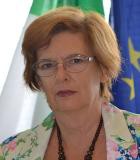
Funzione/Ruolo
Responsabile della Divisione Tecnologie Fisiche per la Sicurezza e la Salute (FSN-TECFIS) dell’ENEA
Percorso professionale
Laureata in Chimica presso l’Università di Roma La Sapienza nel 1978 con tesi sulla spettroscopia elettronica in fase gassosa. Dopo un periodo di borse di studio viene assunta dall’ENEA nel 1982 per collaborare al progetto di arricchimento isotopico dell’uranio via laser, al termine del quale trascorre alcuni periodi di specializzazione all’estero (Università Cattolica di Nijmegen, Politecnico di Zurigo). Le sue esperienze professionali sulla diagnostica e fotochimica laser la portano a diventare nel 1998 responsabile della Sezione FIS-SPET “Spettroscopia Molecolare” dell’ENEA a Frascati, incarico che manterrà fino al 2010. Nel 2010 viene nominata responsabile dell’intera Unità Tecnica “Applicazioni delle Radiazioni” (UTAPRAD) dell’ENEA Frascati. A seguito dell’ultima ristrutturazione dell’ENEA diventa responsabile della divisione TECFIS sempre a Frascati, incarico che tuttora ricopre.
Risultati scientifici
Sin dall’inizio della sua carriera la Roberta Fantoni si è occupata di attività di ricerca multidisciplinari e di progetti al confine fra le competenze di chimica e fisica (spettroscopia e processi chimici). Successivamente, sempre nel campo dell’interazione radiazione-materia, ha condotto la ricerca su processi di interesse applicativo più ampio, dalla biologia alla medicina ai beni culturali. Le sue solide competenze scientifiche e tecnologiche sono state di volta in volta utilizzate e adattate per nuove applicazioni specifiche, come le applicazioni laser in chimica fisica, sulla base di ricerche connesse con il progetto di separazione isotopica via laser prevalentemente riguardante processi multi-fotonici e spettroscopia ad alta risoluzione nell’infrarosso; la spettroscopia e diagnostiche laser, comprendenti la spettroscopia infrarossa mediante diodo laser, la spettroscopia laser Raman, la spettroscopia di emissione nel visibile/ultravioletto, la spettrometria per ionizzazione multifotonica, Laser Induced Fluorescence (LIF), Laser Induced Breakdown Spectroscopy (LIBS), Coherent AntiStokes Raman Scattering (CARS), Degenerate Four Wave Mixing (DFWM) e Laser Induced Grating Spectroscopy (LIGS); Applicazioni laser multisciplinari relative alla microelettronica (deposition di film sottili), alla scienza dei materiali (sintesi di nano-strutture), all’ambiente (decomposizione di inquinanti liquidi e gassosi) e alla caratterizzazione locale e remota di superfici relative a beni culturali; organizzazione e partecipazione a campagne di monitoraggio marine e sui beni culturali. Nel corso della sua carriera Roberta Fantoni ha personalmente stabilito e mantenuto contatti con scienziati responsabili di attività di ricerca in laboratori europei di eccellenza (nel Paesi Bassi, in Svizzera, Romania, Slovenia e Spagna) e in altri paesi del mondo (Russia, Egitto). Le attività di ricerca sono state prevalentemente finanziate attraverso progetti bilaterali di cooperazione finanziati dal Ministero degli Esteri (MAE).
Attività editoriali e pubblicazioni
È autrice di circa 161 pubblicazioni scientifiche, tra cui:
(2010), Popov AM, Colao F, Fantoni R. Spatial confinement of laser-induced plasma to enhance LIBS sensitivity for trace elements determination in soils. Journal of Analytical Atomic Spectrometry, 25:837-848.
(2010) Colao F, Fantoni R, P.Ortiz P, Vazquez MA, Martin JM, Ortiz R, Idris N. Quarry identification of historical building materials by means of laser induced breakdown spectroscopy, X-ray fluorescence and chemometric analysis. Spectrochimica Acta B, 65:688-694.
(2012) Almaviva S, Caneve L, Colao F, Fantoni R, Maddaluno G. Laboratory feasibility study of fusion vessel inner wall chemical analysis by Laser Induced Breakdown Spectroscopy. Chemical Physics, 398, 228–232.
(2012) Almaviva S, Caneve L, Colao F, Fantoni R, Maddaluno G. Remote-LIBS characterization of ITER-like plasma facing materials. Journal of Nuclear Materials, 421:73-79.
(2013) Fantoni R, Caneve L, Colao F, Fiorani L, Palucci A, Dell’Erba R, Fassina V. Laser-induced fluorescence study of medieval frescoes by Giusto de’ Menabuoi. Journal of Cultural Heritage,14: S59–S65.
(2013) Fantoni R, Almaviva S, Caneve L, Colao F, Popov AM, Maddaluno G. Development of Calibration-Free Laser-Induced-Breakdown-Spectroscopy based techniques for deposited layers diagnostics on ITER-like tiles. Spectrochimica Acta B, 87:153-160.
(2013 ) Caneve L, Colao F, Fantoni R, Fiorani L. Scanning lidar fluorosensor for remote diagnostic of surfaces. Nuclear Instruments and Methods in Physics Research A, 720:164–167.
(2014) Almaviva S, Botti S, Cantarini L, Fantoni R, Lecci S, Palucci A, Puiu A and Rufoloni A. Ultrasensitive RDX detection with commercial SERS substrates. Journal of Raman Spectroscopy, 45: 41–46.
(2014) Almaviva S, Fantoni R, Caneve L, Colao F, Fornarini L, Santagata A, Teghil R. Use of ns and fs pulse excitation in laser induced breakdown spectroscopy to improve its analytical performances: a case study on quaternary bronze alloys. Spectrochimica Acta B, 99:185-192.
(2014) Spizzichino V, Fantoni R. Laser Induced Breakdown Spectroscopy in Archeometry: a review of its application and future perspectives. Spectrochimica Acta B, 99:201-209.
(2015) Ortiz R, Ortiz P, Colao F, Fantoni R, Gómez-Morón MA, Vázquez MA. Laser spectroscopy and imaging applications for the study of cultural heritage murals. Construction and Building Materials, 98:35–43.
Riconoscimenti e premi
Nel 1992, Roberta Fantoni vince il Premio “Carnia Ape Verde” per il miglior progetto di ricerca per la tutela della vegetazione, bandito dalla regione Friuli Venezia-Giulia, con i colleghi R. Barbini, F. Colao, A. Palucci, S. Ribezzo.
Nel 1980 vince il Premio “G. Stampacchia” per il miglior lavoro in campo chimico, bandito dall’Università di Roma La Sapienza.
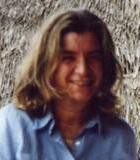
Funzione/Ruolo
Professoressa ordinaria di Fisica Sperimentale presso l'Università La Sapienza di Roma
Percorso professionale
Dopo aver conseguito la laurea in Fisica all'Università La Sapienza di Roma nel 1974, riceve un assegno di formazione presso la stessa università dal 1975 al 1981. Nel 1978 consegue il diploma della Scuola di Perfezionamento in Fisica (indirizzo Fisica Nucleare). Dal 1980 al 1982 è Fellowdi durata biennale del CERN (European Organization for Nuclear Research) presso la Divisione di Experimental Physics. Nel 1981 è ricercatrice confermata dell'Università La Sapienza di Roma fino al 1988, anno in cui diventa professoressa associata presso l'Università della Calabria. Nel 1992 e nel 1999 torna al CERN come Visiting Scientistmentre dal 2011 è professoressa ordinaria di Fisica Sperimentale de La Sapienza di Roma.
Risultati scientifici
Il settore di ricerca cui si dedica Simonetta Gentile riguarda la Fisica Sperimentale delle Particelle Elementari. Le sue linee di indagine seguono il Modello Standard (la teoria che descrive tre delle quattro forze fondamentali note: le interazioni forte, elettromagnetica e debole, e tutte le particelle elementari ad esse collegate) ovvero la Fisica dei neutrini, le funzioni di struttura dei nucleoni, le proprietà dei bosoni intermedi Z e W e la ricerca dei bosoni di Higgs. Attualmente fa parte del progetto ATLAS (A Toroidal LHC ApparatuS), uno dei sei rivelatori di particelle costruiti per il Large Hadron Collider (LHC), l'acceleratore di particelle al CERN, in Svizzera. Simonetta Gentile è anche impegnata nell'attività di ricerca e sviluppo per rivelatori di particelle per futuri acceleratori. Nel corso della sua carriera partecipa a esperimenti mirati a individuare trigger e rivelatori di mesoni mu (muoni, sorta di elettroni pesanti). Collabora con il Fermilab di Batavia (Chicago) nella ricerca di particelle con charm e con la NASA lavora all'AMS, l'Alpha Magnetic Spectrometer, un rivelatore utilizzato nella fisica delle particelle installato dal 19 maggio 2011 sulla Stazione Spaziale Internazionale. È progettato per la ricerca di nuovi tipi di particelle (antimateria, materia oscura, materia strana) tramite la misura ad alta precisione della composizione dei raggi cosmici. Le sue misure aiuteranno gli scienziati a capire le leggi alla base della formazione dell'universo.
Attività editoriali e pubblicazioni
È autrice di numerose pubblicazioni internazionali, tra cui:
(2018) Gentile S. , ATLAS [ATLAS Collaboration, Authors: 2856], Observation of Higgs boson production in association with a top quark pair at the LHC with the ATLAS detector, Phys. Lett. B 784 (2018) 173.
(2018) Gentile S. , ATLAS [ATLAS Collaboration, Authors: 2856], Evidence for the associated production of the Higgs boson and a top quark pair with the ATLAS detector, Phys.Rev. D97 (2018) no.7, 072003.
(2017) Gentile S. , ATLAS Search for the dimuon decay of the Higgs boson in pp collisions at √s = 13 TeV with the ATLAS detector Phys. Rev. Lett. 119 (2017) 051802
(2016) Gentile S. , ATLAS & CMS Collaboration, Measurements of the Higgs boson production and decay rates and constraints on its couplings from a combined ATLAS and CMS analysis of the LHC pp collision data at s√=7 and 8 TeV, JHEP 08 (2016) 045
(2015) Gentile S. , ATLAS Search for the associated production of the Higgs boson with a top quark pair in multilepton final states with the ATLAS detector, Physics Letters B 749 (2015) 519-541
(2013) Corcella G, Gentile S. Heavy Neutral Gauge Bosons at LHC in an Extended MSSM. Nuclear Physics B, 866:293-366.
(2012) Gentile S. Z 'production at LHC in an extended MSSM.Proceedings of Science, 36th International Conference on High Energy Physics, Melbourne, Australia.
(2012) Gentile S. Phenomenology of new heavy neutral gauge bosons in an extended MSSM. Nuovo Cimento C, 035:349-360.
(2012) Aad et al. [ATLAS Collaboration, Authors: 2932]. Observation of a new particle in the search for the Standard Model Higgs boson with the ATLAS detector at the LHC"G. Physics Letters B 716, 1.
(2010) Gentile S. Systematics in charged Higgs search in ATLAS. Proceedings of Science, Third International Workshop on Prospects for charged Higgs Discovery at colliders-CHARGED2010, Uppsala, Sweden.

Funzione/Ruolo
Presidente dell'associazione Italian Climate Network. Meteorologa per Meteo Expert.
Percorso professionale
Serena Giacomin è laureata in Fisica, con specializzazione in Fisica dell’Atmosfera e Climatologia. Conduce le rubriche di previsioni meteo e di approfondimento ambientale in onda sui canali Mediaset e sulle principali radio nazionali. È consulente manageriale per la gestione del rischio climatico e docente e divulgatrice scientifica. Dal 2017 è presidente dell’Italian Climate Network, la onlus nata nel 2011 per rafforzare il contrasto ai cambiamenti climatici con la divulgazione di contenuti scientifici, la promozione di conoscenza e il monitoraggio delle scelte istituzionali compiute nel nostro Paese e in Europa. È direttrice scientifica di Educazione climatica, per il progetto OK! CLIMA.
Risultati scientifici
I principali interessi di ricerca di Serena Giacomin sono l’analisi di modelli meteorologici per attività previsionale e la ricerca sui parametri climatici per la valutazione e la gestione del rischio legato ai cambiamenti climatici. Si occupa inoltre di progettazione e formazione scolastica, per docenti e studenti, e di formazione e consulenza professionale, per le amministrazioni locali.
Attività editoriali e pubblicazioni
Serena Giacomin è autrice, con Luca Perri, di Pinguini all’Equatore. Non tutto ciò che senti sul clima è vero (DeAgostini 2020). Ha collaborato alla realizzazione del manuale scolastico per la scuola secondaria di primo grado Scienze Live (Garzanti Scuola 2020), e ha scritto Meteo che scegli, tempo che trovi (Imprimatur Editore 2018).
Riconoscimenti e premi
Nel 2020 ha ricevuto l’onorificenza civica il Gelso d’oro dalla Città di Cernusco sul Naviglio, con la seguente motivazione: “per l’esempio di impegno nella diffusione dell’informazione scientifica e dei temi legati ai cambiamenti climatici e alla sostenibilità ambientale, in un’epoca nella quale, soprattutto le giovani generazioni, sollecitano la società ad assumere maggiore consapevolezza dei gravi rischi che il pianeta corre – e con esso la vita – se non vengono assunte nuove politiche e stili di vita personali maggiormente rispettosi dell’ambiente”.
Nel 2021 ha ricevuto il premio DonnAmbiente, da 5 Terre Academy, “per aver contribuito a creare un nuovo approccio comunicativo della Scienza attraverso la multimedialità e i social media, coniugando di volta in volta il rigore scientifico di materie complesse come la climatologia e la meteorologia ad un linguaggio autorevole ma sempre accessibile e mai banale, con un’attenzione particolare verso le generazioni più giovani. Altresì, per il suo impegno in prima persona e attraverso l’associazione da lei presieduta, Italian Climate Network, per una maggiore sensibilizzazione verso la questione climatica e per partecipare attivamente alla costruzione di un futuro più sostenibile per il Pianeta”.

Funzione/Ruolo
Docente di fisica, editor scientifica, autrice di manuali di fisica e di saggi scientifici.
Percorso professionale
Elena Joli si laurea in Fisica nel 1993 presso l’Università di Bologna discutendo una tesi di gravità quantistica. Consegue un DEA (Diplôme d’Études Approfondies) en Physique Theorique a Parigi presso l’École Normale Supérieure e il Laboratoire de Physique Théorique et Mathématique dell’Universitè di Jussieu-Paris VII nel 1997. In questo periodo si interessa di epistemologia e comunicazione della scienza e, rientrata in Italia, nel 2002 ottiene il Master in Comunicazione della Scienza presso la SISSA (Scuola Internazionale Superiore di Studi Avanzati) di Trieste, discutendo una tesi sul ruolo della metafora nella scienza e nella sua comunicazione. Dal 1995 inizia a collaborare in modo permanente in ambito editoriale con le Edizioni Dedalo (Bari) prima come traduttrice tecnica dall’inglese e dal francese, poi come consulente scientifica con incarichi di editor scientifica, curando le collane di divulgazione scientifica della casa editrice. Dal 2003 inizia a collaborare con la Zanichelli (Bologna) come autrice di manuali di fisica e materiali didattici digitali per la scuola superiore in collaborazione con il Professor Ugo Amaldi. Dal 2001 inizia la sua attività part-time come professoressa di Fisica nella scuola superiore. Dal 2014 è membro dell’editorial board della rivista di divulgazione scientifica Sapere; dal 2018 è membro del Comitato Scientifico del Museo dell’Ecologia della citta di Cesena. Nel 2018 partecipa alla spedizione australiana Homeward Bound in Antartide, visitando le basi scientifiche Palmer Station e Rothera Station e occupandosi di fisica dei cambiamenti climatici e di comunicazione scientifica sulle questioni ambientali.
Risultati scientifici
Le principali aree di interesse e ricerca di Elena Ioli si sono concentrate, all’avvio dei suoi studi universitari, su modelli bidimensionali di gravità quantistica per la descrizione dei buchi neri. In seguito, ha iniziato a occuparsi di comunicazione della scienza in ambito editoriale, prima come traduttrice di saggi e articoli tecnico-scientifici poi come editor scientifica e come esperta di didattica della fisica per l’insegnamento nella scuola secondaria superiore. Ha curato l’edizione italiana delle lezioni di fisica che il premio Nobel per la Fisica Marie Curie ha tenuto nel 1907 a Parigi grazie a una borsa di studio del Centre National di livre, Ministère de la Culture et de la Communication francese. Attualmente, sta curando la traduzione italiana di un saggio di Alain Aspect, premio Nobel per la Fisica nel 2022. Nel 2018 è stata selezionata per partecipare a una spedizione di scienza, comunicazione e leadership al femminile in Antartide, con il progetto australiano Homeward Bound, come unica italiana insieme ad altre 76 scienziate provenienti da 21 diversi paesi nel mondo. Ha partecipato come speaker su temi legati all’emergenza climatica a trasmissioni televisive (fra cui Maestri RaiScuola) e radiofoniche nazionali e australiane, a Festival della scienza (Genova, Foligno, Bookcity Milano, Polignano “Festival del libro possibile”), a TEdX Women Navigli Milano, al progetto Masterclass del polo di tecnologia educativa digitale Treccani futura.
Attività editoriali e pubblicazioni
[2021] Ioli E., "The circle", Wired (Climate change issue), 98 :155-61.
[2020] Ioli E., Antartide. Come cambia il clima, Bologna: Dedalo.
[2018] Ioli E., "Le regine delle nevi: una spedizione al femminile in Antartide", Sapere, 4:10-7 https://doi 10.12919/sapere.2018.04.1
[2013] Ioli E., Nero come un buco nero, Bari: Dedalo (tradotto in francese da Le Pommier e in inglese da World Scientific Press; traduzione in cinese in corso per Daylight Publishing House).
[2007] Ioli E., “Una piccola differenza", in Sandrelli, Gouthier, Ghattas (eds), Tutti i numeri sono uguali a cinque, pp 167-170; Springer.
[2006] Gouthier D., Ioli E., Le parole di Einstein, Bari: Dedalo.

Funzione/Ruolo
Prima Ricercatrice del Consiglio Nazionale delle Ricerche (CNR), presso l’Istituto di Nanotecnologia (NANOTEC) di Lecce.
Percorso professionale
Dopo aver conseguito la laurea in Fisica all'Università di Roma La Sapienza nel 1995, prosegue il suo percorso formativo in Francia presso l’Université Cotê d`Azur, conseguendo un dottorato di ricerca in Fisica nel dicembre 1999. Dal 2000 al 2001 è Post-doc con un contratto INFM presso il Dipartimento di Fisica dell’Università Tor Vergata di Roma. Dal gennaio 2002 al novembre 2018, è ricercatrice del Consiglio Nazionale delle Ricerche, presso l’Istituto di Scienze dell’Atmosfera e del Clima. Dal 2019 è Senior Scientist (Prima Ricercatrice) presso l’Istituto di Nanotecnologia del CNR, a Lecce.
Risultati scientifici
Alessandra è una fisica teorica, esperta di metodi computazionali per la dinamica dei fluidi e i fluidi complessi. A partire dal dottorato nel 1996, il suo lavoro si è concentrato sulla descrizione statistica e dinamica della turbolenza, in flussi ideali e complessi. Dal 2003, ha studiato il comportamento di flussi multifase, costituiti da sospensioni turbolente di piccole particelle, come ad esempio particelle di aerosol in aria o goccioline di pioggia, con applicazioni in problemi di ingegneria e geofisica. Ha partecipato e diretto vari progetti di super calcolo, grazie a grant europei PRACE. Dal 2006, è coordinator locale (Unità INFN DI Lecce) del progetto “Particles and Fields in Complex flows” dell’Istituto Nazionale di Fisica Nucleare. Parallelamente all’attività di ricerca, ha organizzato numerose scuole di fisica e workshop per giovani ricercatori/trici.
Attività editoriali e pubblicazioni
Alessandra Lanotte è Deputy Editor di Europhysics Letters (EPL) EPS ed è stata precedentemente Associate Editor di Physics of Fluids, AIPP.
E' stata Guest editor delle Focus Issues "Turbulent regimes in Bose-Einstein Condensates", EPL (2021), e "Two-Dimensional Turbulence", Physics of Fluids (2017), e dei numeri speciali "Flowing Matter Across the Scales", EPJE (2015) e "Lagrangian Dynamics", Journal of Turbulence(2007).
Fra le sue pubblicazioni, si segnalano le seguenti.
[2021] Panico R, Macorini G, Dominici L, Gianfrate A, Fieramosca A, De Giorgi M, Gigli G, Sanvitto D, Lanotte A S, Ballarini D. Dynamics of a Vortex Lattice in an Expanding Polariton Quantum Fluid. Physical Review Letters 127 (4), 047401.
[2016] Biferale L, Bonaccorso F, Mazzitelli I M, van Hinsberg M A T, Lanotte A S, Musacchio S, Perlekar P, Toschi F. Coherent structures and extreme events in rotating multiphase turbulent flows. Phys. Rev. X 6, 041036.
[2015] Lanotte A S, Benzi R, Malapaka S K, Toschi F, Biferale L. Turbulence on a Fractal Fourier set. Phys. Rev. Letters 115, 264502.
[2013] Lanotte A S, Mazzitelli I M. Scalar turbulence in convective boundary layers with different entrainment fluxes. Journ. Atmos. Sci. 70, 248-265.
[2012] Baebler M U, Biferale L, Lanotte A S. Break-up of small aggregates driven by turbulent hydrodynamical stress. Phys. Review E.85.025301.
[2010] Bec J, Biferale L, Lanotte A S, Scagliarini A, Toschi F. Turbulent pair dispersion of inertial particles. Journ. Fluid Mech. 645, 497.
[2009] Lanotte A S, Seminara A, Toschi F. Cloud droplet growth by condensation in homogeneous isotropic turbulence, Journ. Atmos. Sci. 66, 1685.
[2008] Arnéodo A, et al. Universal intermittent properties of particle trajectories in highly turbulent flows. Physical Review Letters 100 (25), 254504.
[2007] Bec J, Biferale L, Cencini M, Lanotte A S, Musacchio S, Toschi F. Heavy particle concentration in turbulence at dissipative and inertial scales. Phys Rev Lett. 98, 084502.
[2004] Biferale L, Boffetta G, Celani A, Devenish B J, Lanotte A, Toschi F. Multifractal statistics of Lagrangian velocity and acceleration in turbulence. Physical Review Letters 93 (6), 064502.
[2000] Celani A, Lanotte A, Mazzino A, Vergassola M. Universality and saturation of intermittency in passive scalar turbulence. Physical Review Letters 84 (11), 2385.
[1999] Lanotte A, Noullez A, Vergassola M, Wirth A. Large-scale dynamo produced by negative magnetic eddy diffusivities. Geophys. Astrophys. Fluid Dyn. 91, 131.
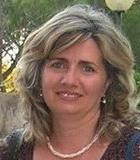
Funzione/Ruolo
Prima Ricercatrice dell'Istituto di Fisica Nazionale (INFN) sezione di Pisa
Percorso professionale
Dopo aver conseguito la laurea in Fisica all'Università di Pisa nel 1990 prosegue il suo percorso formativo attraverso un dottorato di ricerca in Fisica ottenuto presso lo stesso ateneo nel 1994. Nel 1994 è borsista Post-Doc dell'INFN sezione di Pisa, l'anno successivo è professoressa di ruolo di Fisica presso IPSIA Solvay a Rosignano (Livorno). Nel 1996 rientra all'Istituto Nazionale di Fisica Nucleare e nel 1997 è ricercatrice dello stesso istituto. Dal 2009 a oggi è Prima Ricercatrice dell'Istituto Nazionale di Fisica Nucleare presso la sezione di Pisa. Ha ottenuto l'abilitazione scientifica nazionale a professoressa ordinaria nel settore 02/A1 (Fisica sperimentale delle interazioni fondamentali). Dal 2005 al 2017 è responsabile dell'edizione di Pisa della Masterclass Europea di Fisica delle particelle (attività divulgativa per studenti dei licei) e ha fatto parte del comitato organizzatore locale di 6 congressi internazionali. Dal 2002 al 2008 è responsabile dell'organizzazione dei seminari di Fisica sperimentale della sezione di Pisa dell'Istituto Nazionale di Fisica Nucleare.
Risultati scientifici
Il campo di ricerca di Sandra Leone è la Fisica sperimentale delle particelle elementari. Già dal 1989 studia le collisioni protone-antiprotone nell'esperimento CDF Collider Detector al Tevatron Collider al Fermilab, negli Stati Uniti, con particolare attenzione alla produzione dei bosoni intermedi W. Nel biennio 1994/1995 si occupa dello studio del processo di produzione di quark top e partecipa alla prima osservazione del quark top sempre nell'ambito dell'esperimento CDF (Collider Detector at Fermilab). Dal 1997 al 2001 si occupa dei rivelatori a semiconduttore e delle loro applicazioni per esperimenti a collisionatori adronici, nello specifico della costruzione del rivelatore ISL per l'esperimento CDF. E dal 1998 al 2001 è responsabile dalla costruzione e test di 161 moduli elementari del rivelatore a silicio ISL per l'esperimento CDF al Fermilab. Negli anni successivi si dedica allo studio della produzione associata di bosoni intermedi WZ e della ricerca del bosone di Higgs. Nel 2013 entra a far parte dell'esperimento ATLAS al CERN, e partecipa alla costruzione del sistema di calibrazione con Laser per il calorimetro adronico. Dal 2015 si occupa di test di longevità dei fotomoltiplicatori per il calorimetro adronico di ATLAS. Oltre a collaborare con il CERN per lo studio delle collisioni protone-protone, continua ad occuparsi della analisi dei dati raccolti dall'esperimento CDF al Tevatron. È stata relatrice su invito a 15 conferenze internazionali in sessione plenaria e ha presentato risultati scientifici in numerose conferenze nazionali, scuole di fisica, seminari e sessioni parallele di congressi internazionali, ultimo dei quali ‘Ichep2016', uno dei più importanti appuntamenti nell'ambito della fisica delle alte energie, che si è svolto a Chicago nell'agosto 2016.
Attività editoriali e pubblicazioni
È autrice di più di 1000 pubblicazioni internazionali fra cui:
(2016) CDF Collaboration. Measurement of the WW and WZ production cross section using final states with a charged lepton and heavy-flavor jets in the full CDF Run II data set. Physical Review D, 94, 032008.
(2016) ATLAS Collaboration. Measurement of the W±Z boson pair-production cross section in pp collisions at center of mass energy 13 TeV with the ATLAS Detector. Physical Letters B, 762, 1-22.
(2014) CDF Collaboration. Measurement of B(t→Wb)/B(t→Wq) in Top-Quark-Pair Decays Using Dilepton Events and the Full CDF Run II Data Set. Physical Review Letters, 112, 221801.
(2014) CDF Collaboration. Measurement of the Single Top Quark Production Cross Section and |Vtb| in Events with One Charged Lepton, Large Missing Transverse Energy, and Jets at CDF. Physical Review Letters, 113, 261804.
(2012) CDF Collaboration. Search for the Standard Model Higgs Boson Decaying to a bottom-antibottom Pair in Events with One Charged Lepton and Large Missing Transverse Energy Using the Full CDF Data Set. Physical Review Letters, 109, 111804.
(2012) CDF Collaboration. Evidence for a Particle Produced in Association with Weak Bosons and Decaying to a Bottom-Antibottom Quark Pair in Higgs Boson Searches at the Tevatron. Physical Review Letters, 109, 071804.
(2007) CDF Collaboration. First Measurement of the Ratio of Central-Electron to Forward-Electron W Partial Cross Sections in proton-antiproton collisions at center of mass energy of 1.96 TeV. Physical Review Letters, 98, 251801.
(2002) ISL Collaboration. Status Report of the Intermediate Silicon Layers Detector at CDFII. Nuclear Instruments and Methods in Physics Research A, 485, 6-9.
(1995) CDF Collaboration. Observation of Top Quark Production in proton-antiproton collisions with the Collider Detector at Fermilab. Physical Review Letters, 74, 2626.
(1992) Abe F, [...] Leone S, et al. Lepton Asymmetry in W-boson Decays from proton-antiproton Collisions at center of mass energy of 1.8 TeV. Physical Review Letters, 68, 1458.
Riconoscimenti e premi
Sandra Leone ricopre e ha ricoperto diversi ruoli di rilievo nella società scientifica. Nel 1995 riceve un premio della Società Italiana di Fisica (SIF) per giovani ricercatori. Dal 1998 è referee scientifico delle riviste Physical Review Letters e Physical Review D. Dal marzo 2013 è membro della redazione del sito web divulgativo dell'INFN "Scienza Per Tutti". A partire dal 2008 ottiene vari contratti dalla Research Executive Energy della Commissione Europea come Esperto Valutatore Indipendente nell'ambito del Settimo Programma Quadro e di Horizon 2020. Dal 2006 al 2011 fa parte del comitato pari opportunità dell'Istituto Nazionale di fisica Nucleare su designazione dell'ente.
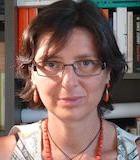
Funzione/Ruolo
Prima Ricercatrice all’ENEA, sede di Bologna
Percorso professionale
Dopo la laurea in Fisica nel 1992 presso l’Università degli Studi di Pisa, con una tesi svolta prevalentemente al CERN di Ginevra, prosegue la formazione con una borsa di studio dell’Istituto Nazionale di Fisica della Materia nell’ambito della fisica della fusione termonucleare controllata e inizia così la collaborazione con il Consorzio RFX di Padova. Dal 1993 al 1999 è ricercatrice all’ENEA (Agenzia Nazionale per le nuove tecnologie, l’energia e lo sviluppo economico sostenibile) dove si occupa fino al 1999 di modellistica ambientale, sviluppando e applicando codici per lo studio della dispersione d’inquinanti reattivi in atmosfera. Nel 1999 ritorna a lavorare a Padova presso il Consorzio RFX, dove continua la sua esperienza nella fisica dei plasmi ad alta temperatura. Tra gli anni 2000 e 2002 svolge ricerca per vari mesi presso il Max Planck Institut für Plasmaphysik di Monaco di Baviera, per lavorare sull’esperimento tokamak ASDEX Upgrade nell’ambito del programma Mobility dell’EURATOM.
Consegue il Dottorato di Ricerca in Energetica presso l’Università degli Studi di Padova nel 2005. Dal 2006 è Prima Ricercatrice all’ENEA.
Risultati scientifici
Rita Lorenzini conduce attività di ricerca nell’ambito della fisica dei plasmi finalizzata a ottenere la fusione termonucleare, che ha lo scopo di ricavare energia dai processi fisici che avvengono nelle stelle riprodotti in laboratorio.
Rita Lorenzini svolge la sua attività prevalentemente sull’esperimento Reversed Field Pinch RFX-mod che si trova a Padova, operato dal Consorzio RFX, formato da CNR, ENEA, INFN, Università di Padova e Acciaierie Venete. Numerose sono anche le sue collaborazioni internazionali: per esempio con il gruppo di ricerca del Madison Symmetric Torus experiment (MST), nel Wisconsin (USA), e più recentemente con il gruppo di ricerca all’Heliotron LHD a Tokyo, in Giappone
Rita Lorenzini studia il problema del trasporto di particelle ed energia nei plasmi, attraverso l’analisi dei dati e la modellistica. Partecipa alle campagne sperimentali per la realizzazione di esperimenti che si svolgono ad RFX-mod, alla cui organizzazione ha attivamente contribuito come Task Force Leader in vari anni.
Nei suoi lavori Rita Lorenzini ha contribuito a caratterizzare le barriere di trasporto che si osservano negli stati elicoidali e a chiarire i legami tra il trasporto di energia e particelle in questi stati e la turbolenza magnetica. La sua attività è prevalentemente dedicata a studiare il trasporto negli stati a confinamento migliorato che si ottengono quando un plasma toroidale, scaldato da un’alta corrente, assume una forma elicoidale. Una scoperta recente, datata 2008, cui Rita Lorenzini ha contribuito.
Le sue ricerche più recenti mirano a migliorare la comprensione della fisica degli stati elicoidali di RFX-mod adattando ai plasmi di laboratorio gli studi sulla riconnessione magnetica che produce i solar flares. Si è occupata anche di valutare e capire le differenze tra i plasmi in idrogeno e in deuterio ottenuti recentemente ad RFX-mod.
Attualmente partecipa a una ricerca, in collaborazione con i ricercatori di LHD, per sviluppare un codice che consenta di simulare plasmi con più assi magnetici, allo scopo di studiare il trasporto del calore, attraverso l’analisi dell’evoluzione spazio-temporale d’impulsi caldi o freddi generati nei plasmi di LHD in cui sono presenti isole magnetiche.
Attività editoriali e pubblicazioni
È autrice di numerose pubblicazioni in riviste internazionali e di atti di convegni, tra cui:
[2018] F. Auriemma, D. Lopez-Bruna, R. Lorenzini, B. Momo, I. Predebon, Y. Suzuki, A. López-Fraguas, Y. Narushima, F. Sattin, D. Terranova ‘A novel approach to studying transport in plasmas with magnetic islands’ Nuclear Fusion 58, 096037.
[2018] C.F. Maggi, H.Weisen, J.C. Hillesheim, A. Chankin, E. Delabie, L. Horvath, F. Auriemma, I.S. Carvalho, G. Corrigan, J. Flanagan, L. Garzotti, D. Keeling, D. King, E. Lerche, R. Lorenzini et al ‘Isotope effects on L-H threshold and confinement in tokamak plasmas,’ Plasma Physics and Controlled Fusion 60, 125002.
[2016] Lorenzini R, Auriemma F, Fassina A, Martines E, Terranova D and Sattin F. Internal Transport Barrier Broadening through Subdominant Mode Stabilization in Reversed Field Pinch Plasmas, Physical Review Letters, 116, 185002.
[2015] Lorenzini R, Agostini M, Auriemma F, Carraro L, De Masi G, Fassina A, Franz P, Gobbin M, Innocente P, Puiatti ME, Scarin P, Zaniol B and Zuin M. The isotope effect in the RFX-modExperiment, Nuclear Fusion, 55, 043012.
[2012] Lorenzini R, Alfier A, Auriemma F, Fassina A, Franz P, Innocente P, Lopez-Bruna D, Martines E, Momo B, Pereverzev G, Piovesan P, Spizzo G, Spolaore M and Terranova D. On the energy transport in internal transport barriers of RFP plasmas, Nuclear Fusion, 52, 062004.
[2011] Bergerson WF, Auriemma F, Chapman BE, Ding WX, Zanca P, Brower DL, Innocente P, Lin L, Lorenzini R, Martines E, Momo B, Sarff JS and Terranova D. Bifurcation to 3D Helical Magnetic Equilibrium in an Axisymmetric Toroidal Device, Physical Review Letters, 107, 255001.
[2009] Lorenzini R, Martines E, Piovesan P, Terranova D, Zanca P, Zuin M et al. Self-organized helical equilibria as a new paradigm for ohmically heated fusion plasmas, Nature Physics, 5:570-574.
[2008] Lorenzini R, Terranova D, Alfier A, Innocente P, Martines E, Pasqualotto R, Zanca P. Single-Helical-Axis States in Reversed-Field-Pinch Plasmas, Physical Review Letters, 101, 025005.
[2007] Lorenzini R, Terranova D, Auriemma F, Cavazzana R, Innocente P, Martini S, Serianni G and Zuin M. Toroidally asymmetric particle transport caused by phase-lockingof MHD modes in RFX-mod, Nuclear Fusion, 47: 1468.
Riconoscimenti e premi
Rita Lorenzini ha tenuto la relazione su invito dal titolo Improvement of the magnetic configuration in the Reversed Field Pinch through successive bifurcations al 50th Annual Meeting of the Division of Plasma Physics, American Physical Society nel Novembre 2008 a Dallas, Texas.
E’ membro del Comitato Scientifico della 41st European Physical Society Conference on Plasma Physics.
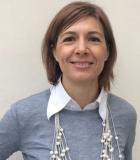
Funzione/Ruolo
Professoressa associata di Fisica all’Università degli studi di Cagliari e presso l’Istituto Nazionale di Fisica Nucleare
Percorso professionale
Dopo la laurea in Fisica presso l'Università di Cagliari, nel 1999, perfeziona la sua formazione con un dottorato di ricerca in Fisica all’Università di Oxford che consegue nel 2003. Nello stesso anno prosegue i suoi studi con un post-doc sempre in Inghilterra, prima a Oxford e poi all’Università di Liverpool. Dal 2000 al 2006, collabora come Associata Scientifica con il laboratorio Fermilab di Chicago, negli Stati Uniti. Nel 2007, rientra in Italia, a Cagliari, come ricercatrice all’INFN (Istituto Nazionale di Fisica Nucleare) e, l’anno successivo, all’Università. Dal 2012 al 2013 collabora con il laboratorio CERN di Ginevra. Nel 2015 vince un ERC Consolidator Grant con il CNRS (Centre National de la Recherche Scientifique) e si trasferisce a Orsay, Parigi, fino alla fine del 2016. Nel 2016 è anche visiting professor all’Università di Cambridge, UK. Nel 2017 diventa professoressa associata all’Università di Cagliari. Attualmente si occupa dello studio della fisica degli ioni pesanti con l’esperimento LHCb al CERN e guida un gruppo di ricerca di sei post-docs, due studenti e due ricercatori diviso tra Orsay e Cagliari.
Risultati scientifici
Nel 2002 osserva assieme ai colleghi dell’esperimento CDF (Collider Detector at Fermilab) il decadimento dei bosoni W e Z (particelle fondamentali del Modello Standard) in elettroni e ne misura la sezione d'urto di produzione e il rapporto per la prima volta a quell’energia, pubblicando il lavoro nella sua tesi di dottorato. Nel 2003 lavora con un gruppo di 14 persone dedite alla ricerca delle particelle supersimmetriche chargino e neutralino nel loro decadimento leptonico, arrivando a coordinarle e pubblicando il miglior limite mondiale in quel momento sulla loro massa e sezione d’urto di produzione. Nel 2007 diviene membro della collaborazione LHCb (Large Hadron Collider beauty) - esperimento dell'acceleratore LHC del CERN che ha lo scopo di misurare i parametri della violazione CP e decadimenti e fenomeni rari relativi agli adroni in cui è presente il quark beauty (quark b) - al CERN di Ginevra. Partecipa a diversi studi sulla produzione di stati associati di quark-antiquark (quarkonia) pubblicando diversi lavori in merito e collaborando con teorici esperti del campo. Dal 2009 al 2013 diventa la responsabile di tale fisica nell’esperimento. Nel 2015 fonda un nuovo gruppo di ricerca all’interno di LHCb aprendo la via alle misure di precisione di Quark Gluon Plasma ad alte rapidità, il suo attuale campo di ricerca.
Attività editoriali e pubblicazioni
È autrice di numerose pubblicazioni nazionali ed internazionali, tra cui:
(2017) Aaij R, Manca G et al. [LHCb Collaboration]. Study of prompt D0 meson production in pPb collisions at √snn = 5 TeV, Journal of High Energy Physics, 1710, 090.
(2014) Manca G. Review on quarkonia production at LHC, International Journal of Modern Physics A, 29, 1430014.
(2013) Aaij R, Manca G et al. [LHCb Collaboration]. Production of J/Ψ and Υ mesons in pp collisions at √s = 8 TeV, Journal of High Energy Physics, 1306, 064.
(2013)A.A. Alves Jr., G. Manca et al. [LHCb Muon Collaboration]. Performance of the LHCb muon system, Journal of Instrumentation, 8, P02022.
(2012) Aaij R, Manca G et al. [LHCb Collaboration]. Measurement of Υ production in pp collisions at √s = 7 TeV, European Physical Journal C, 72, 2025.
(2011) Aaij R, Manca G et al. [LHCb Collaboration] Measurement of J/Ψ production in pp collisions at √s = 7 TeV. European Physical Journal C, 71, 1645.
(2010) Anelli M, Manca G et al. [LHCb Muon Collaboration]. Performance of the LHCb muon system with cosmic rays, Journal of Instrumentation ,5, P10003.
(2007) Aaltonen T, Manca G et al. [CDF Collaboration]. Search for chargino-neutralino production in pp collisions at √s = 1.96 TeV, Phys. Rev. Lett. 99 191806.
(2008) Aaltonen T, Manca G et al. [CDF Collaboration]. Search for supersymmetry in pp collisions at √s = 1.96 TeV Using the tri-lepton signature of Chargino-Neutralino production, Physical Review Letters, 101, 251801.
(2005) D. Acosta, G. Manca et al. [CDF Collaboration]. First measurements of inclusive W and Z cross-sections from Run II of the Tevatron collider, Physical Review Letters, 94, 091803.
(2007) Abulencia A, Manca G et al. [CDF Collaboration]. Measurements of inclusive W and Z cross-sections in pp collisions at √s = 1.96 TeV, Journal of Physics G, 34,2457.
È revisora per le riviste Journal of High Energy Physics e European Physical Journal.
Riconoscimenti e premi
Nel 2005 vince la Particle Physcs and Astronomy Research Council fellowship per due anni. Nel 2015 ha vinto un ERC Consolidator Grant della durata di 5 anni per un totale di 1,9 milioni di euro.
Dal 2016 fa parte dell’AccademiaNet network.
È nella lista dei Top Italian Scientists dal 2012.
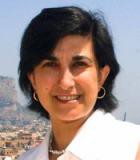
Funzione/Ruolo
Dirigente di Ricerca presso l'Istituto Nazionale di Astrofisica; Direttrice dell'INAF - Osservatorio Astronomico di Palermo
Percorso professionale
Dopo la laurea in Fisica, conseguita presso l'Università degli Studi di Palermo, nel 1983, vince una borsa di studio del CNR grazie alla quale nel 1985 trascorre un periodo presso l'Harvard Smithsonian Center for Astrophysics - una delle principali istituzioni scientifiche mondiali nell'ambito dell'astrofisica - dove partecipa all'analisi dei dati stellari ottenuti con il satellite Einstein lanciato qualche anno prima. Usufruisce poi di una borsa di studio presso l'Istituto per le Applicazioni Interdisciplinari della Fisica del CNR. Nel 1991 consegue il dottorato in Fisica presso l'Università degli Studi di Palermo con una tesi dal titolo: "L'emissione di fondo nella banda 0.16-3.5 keV osservata con l'Imaging Proportional Counter a bordo del satellite Einstein. Il contributo degli AGN e della componente stellare della Galassia". Dopo il dottorato diventa astronoma presso l'Osservatorio Astronomico di Palermo. Trascorre un periodo presso il Dipartimento di Astronomia e Astrofisica dell'Università di Chicago grazie a una borsa di studio CNR/NATO Senior. Oggi è Dirigente di Ricerca e direttrice dell'Osservatorio Astronomico di Palermo, una struttura di ricerca dell'Istituto Nazionale di Astrofisica.
Risultati scientifici
La sua attività scientifica si è focalizzata sullo studio della fisica dell'alta atmosfera stellare e temi correlati. In particolare è stata fra i primi ricercatori a svolgere attività di ricerca sulle corone delle stelle giovani attraverso osservazioni di ammassi aperti e regioni di formazione stellare con missioni spaziali (Einstein, Rosat, Chandra, XMM/Newton), determinando come la radiazione ad alta energia in queste stelle sia molto più alta di quella presente oggi nel Sole. Si è poi occupata di regioni di formazione stellare e dei processi fisici che governano la formazione delle stelle in varie bande di energia, fino allo studio della popolazione stellare giovane nell'intorno solare evidenziando come la regione attorno al Sole sia stata la sede di un episodio di formazione stellare nell'ultimo miliardo di anni. Oggi si occupa di pianeti extrasolari con particolare riferimento alla ricerca di pianeti di piccola massa attorno a stelle più piccole del Sole e alle interazioni con la stella centrale. E' coinvolta dell'utilizzo dello spettrografo HARPS-N (di cui è co-investigator) istallato al Telescopio Nazionale Galileo, che è oggi lo strumento più sensibile per la ricerca di pianeti nell'emisfero Nord. Inoltre è co-principal Investigator e responsabile italiano per la missione ARIEL dell'Agenzia Spaziale Europea per l'osservazione delle atmosfere esoplanetarie, oggi in fase di studio.
Attività editoriali e pubblicazioni
Giuseppina Micela è autrice di oltre 300 pubblicazioni scientifiche su riviste internazionali. Inoltre svolge attività di divulgazione dell'astronomia, e in particolare ha pubblicato il volume Nascita e morte delle stelle per la collana "Farsi un'idea" della casa editrice Il Mulino.
Fra i suoi articoli:
[2016] Affer L, Micela G, Damasso M, Perger M, Ribas I et al. HADES RV program with HARPS-N at the TNG. GJ 3998: An early M-dwarf hosting a system of super-Earths, Astronomy & Astrophysics, 593, 117.
[2015] Reale F, Gambino A F, Micela G, Maggio A, Widemann Th, Piccioni G. Using the transit of Venus to probe the upper planetary atmosphere, Nature Communications, 6, 7563.
[2013] Pepe F, Cameron Collier A, Latham, DW, Molinari E, Udry S, Bonomo A, Buchhave LA, Charbonneau,D, Cosentino R, Dressing CD, Dumusque X, Figueira P, Fiorenzano AFM, Gettel S, Harutyunyan A, Haywood RD, Horne K, Lopez-Morales M, Lovis C, Malavolta L, Mayor M, Micela G et al. An Earth-sized planet with an Earth-like density, Nature, 503, 7476:377-380.
[2012] Caramazza M, Micela G, Prisinzano L, Sciortino S, Damiani F, Favata F, Stauffer JR, Vallenari A, Wolk SJ. Star formation in the outer Galaxy: coronal properties of NGC 1893, Astronomy & Astrophysics, 539, 74.
[2008] Penz T, Micela G, Lammer H. Influence of the evolving stellar X-ray luminosity distribution on exoplanetary mass loss, Astronomy and Astrophysics, 477, 309-314.
[2006] Cecchi-Pestellini C, Ciaravella A, Micela G, Stellar X-ray heating of planet atmospheres, Astronomy and Astrophysics, 458:L13-L16.
[2003] Favata F, Micela, G. Stellar Coronal Astronomy, Space Science Reviews, 108, 577-708.
[1993] Micela G, Sciortino S, Favata F. Stellar birthrate in the Galaxy - Constraints from X-ray flux-limited surveys, Astrophysical Journal, 412:618-624.
[1988] Micela G, Sciortino S, Vaiana GS, Schmitt JHMM, Stern RA, Harnden FR Jr, Rosner R. The Einstein Observatory survey of stars in the Hyades cluster region, Astrophysical Journal, 325:798-819.
[1985] Micela G, Sciortino S, Serio S, Vaiana GS, Bookbinder J, Golub L, Harnden FR Jr, Rosner R. Einstein X-ray survey of the Pleiades - The dependence of X-ray emission stellar age, Astrophysical Journal, 292:172-180.
Riconoscimenti e premi
Giuseppina Micela è stata componente di numerosi team scientifici per lo studio di missioni dell'Agenzia Spaziale Europea (Eddington, Plato, EChO, ARIEL) e di altri progetti nazionali e internazionali da terra e dallo spazio. E' stata responsabile nazionale del progetto PREMIALE, finanziato dal MIUR, "A Way to Other Worlds - WOW". Inoltre è stata vincitrice di alcuni programmi della Commissione Europea, che hanno permesso a diversi ricercatori europei di svolgere la loro attività presso l'Osservatorio di Palermo.
Oggi è membro del patronato della Fundacion Galileo Galilei, che gestisce il telescopio Nazionale Galileo situato nelle isole Canarie, è membro del Consiglio di Amministrazione della fondazione di partecipazione Gal Hassin, e dell'International Advisory Committee dell' Institute of Space Sciences (IEEC-CSIC), in Barcellona. Infine è membro del collegio dei docenti in Fisica dell'Università di Palermo.
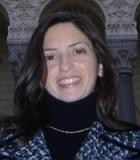
Funzione/Ruolo
Professoressa associata di Fisica sperimentale presso l'Università degli studi di Messina e Visiting Professor presso l'Université Paris-Sud
Percorso professionale
Dalla laurea in Fisica nel 1998 all'età di 22 anni, il Dottorato di Ricerca in Fisica e il Dottorato Europeo per User of Large Experimental Systems a Grenoble (Francia) nel 2002, svolge le sue ricerche presso diversi laboratori internazionali. Nel 2003 è ricercatrice ATER presso l'Università di Lille (Francia), dove dal 2008 al 2010 è borsista internazionale UNESCO-L'Oréal For Women in Science. Nel 2011 acquisisce la "qualification aux fonctions de professeur des universités" nella sezione 28 e nel 2016 nella sezione 64 in Francia. Nel 2012 è borsista internazionale European Molecular Biology Organisation presso l'Institut de Biochimie et Biophysique Moléculaire et Cellulaire, Université de Paris-Sud XI (Francia). Nel 2013 acquisisce l'abilitazione scientifica nazionale come Professoressa di prima fascia in Fisica Sperimentale della Materia, divenendo nel 2015 Professoressa di seconda fascia di Fisica Sperimentale presso l'Università degli Studi di Messina. Da Luglio 2016 è Visiting Professor presso l'Institut de Biologie Intégrative de la Cellule, CEA-CNRS-Université Paris Sud (Francia).
Risultati scientifici
Federica Migliardo è una biofisica che svolge le proprie ricerche nel dominio delle scienze della vita nell'ambito di diverse collaborazioni internazionali. La sua attività di ricerca si focalizza principalmente sullo studio di processi biologici quali la bioprotezione, la denaturazione e la stabilizzazione delle biomolecole, e, più recentemente, di alcune malattie infettive (tubercolosi e schistosomiasi) e neurodegenerative (Parkinson), con il fine di determinarne i meccanismi molecolari e comprendere il ruolo dei bioprotettori naturali.
L'idea forza della ricerca nasce dall'osservazione che diversi organismi "estremofili" (che amano l'estremo) mostrano straordinarie capacità di sopravvivenza in condizioni ritenute proibitive grazie a un particolare zucchero, il trealosio, che può essere usato come agente naturale e innovativo per proteggere e stabilizzare sistemi di interesse biomedico e farmaceutico, come proteine, cellule staminali, plasma, anticorpi e vaccini. Gli studi sperimentali, condotti mediante l'applicazione sinergica di tecniche complementari, come la spettroscopia di neutroni e di luce, hanno mostrato che lo zucchero deforma la struttura dell'acqua impedendo la formazione del ghiaccio, proteggendo così gli esseri viventi dal congelamento, e che è anche capace di rivestire le molecole biologiche creando un ambiente rigido che le protegga da condizioni ambientali avverse. La conoscenza approfondita delle proprietà uniche del trealosio ha aperto la strada a nuovi studi su alcune malattie per le quali non esiste ancora oggi una cura. Il trealosio può essere impiegato nella cura di malattie neurodegenerative, in quanto è capace di inibire l'aggregazione delle proteine, come l'alfa-sinucleina nel Parkinson, che in tali malattie mostrano comportamenti anomali, migliorando le funzioni motorie e innalzando le aspettative di vita. D'altra parte, il trealosio si trova legato a dei particolari acidi grassi nella membrana esterna del batterio della tubercolosi, membrana che crea una sorta di barriera tra il batterio e gli antibiotici, incrementandone la resistenza; l'obiettivo di questa ricerca è rendere questa barriera più fragile e dunque più permeabile ai farmaci che così saranno molto più efficaci. La stessa filosofia è impiegata nello studio della schistosomiasi, parassitosi che rappresenta la seconda malattia tropicale, dal momento che i parassiti si proteggono dagli attacchi del nostro sistema immunitario grazie a una membrana esterna molto particolare che fa passare i nutrienti ma non i farmaci.
Attività editoriali e pubblicazioni
È coautrice di oltre 170 articoli scientifici pubblicati su riviste internazionali, tra cui:
[2017] Migliardo F, Angell CA, Magazù S. Contrasting dynamics of fragile and non-fragile polyalcohols through the glass, and dynamical, transitions: A comparison of neutron scattering and dielectric relaxation data for sorbitol and glycerol, Biochimica Biophysica Acta - General Subjects, 1861, 3540.
[2015] Migliardo F, Salmeron C, Bayan N. Mobility and temperature resistance of trehalose mycolates as key-characteristics of the outer membrane of Mycobacterium tuberculosis, Journal of Biomolecular Structure and Dynamics, 33, 447.
[2014] Bousset L, Brewee C, Melki R, Migliardo F. Dynamical Properties of -Synuclein in Soluble and Fibrillar Forms by Quasi Elastic Neutron Scattering, BBA - Proteins and Proteomics, 1844, 1307.
[2014] Migliardo F, Tallima H, El Ridi R. Is There a Sphingomyelin-Based Hydrogen Bond Barrier at the Mammalian Host-Schistosome Parasite Interface?, Cell Biochemistry and Biophysics, 68, 359.
[2013] Fenimore PW, Frauenfelder H, Magazù S, McMahon BH, Mezei F, Migliardo F, Young RD, Stroe I. Concepts and Problems in Protein Dynamics, Chemical Physics, 424, 2.
[2011] Magazù S, Migliardo F, Parker SF. Vibrational Properties of Bioprotectant Mixtures of Trehalose and Glycerol, Journal of Physical Chemistry B, 115, 11004.
[2007] Lishchuk SV, Lokotosh TV, Magazù S, Malomuzh NP, Migliardo F. Role of the orientation disorder in the formation of fragility of glassy water and glycerol-like liquids, Physical Review E, 76, 061504.
[2007] Magazù S, Migliardo F, Ramirez-Cuesta AJ. Concentration Dependence of Vibrational Properties of Bioprotectant/Water Mixtures by Inelastic Neutron Scattering, Journal of Royal Society Interface, 4, 167.
[2005] Lerbret A, Bordat P, Affouard F, Descamps M, Migliardo F. How Homogeneous are the Trehalose, Maltose and Sucrose Water Solutions? An Insight from Molecular Dynamics Simulations, Journal of Physical Chemistry B, 109, 11046.
[2003] Vertessy BG, Magazù S, Mangione A, Migliardo F, Brandt A. Structure of Escherichia coli dUTPase in Solution: A Small Angle Neutron Scattering Study, Macromolecular Bioscience, 3, 477.
Riconoscimenti e premi
Federica Migliardo ha ricevuto diversi premi e riconoscimenti internazionali e nazionali, quali il Premio Internazionale BioVision for Life Sciences 2011, le Borse di Studio Internazionale 2008 e Nazionale 2005 UNESCO-L'Oréal For Women in Science, il Premio Internazionale EUWIIN (European Union Women Inventors and Innovators Network) Special Recognition Award 2007, il Premio Sapio per la Ricerca Italiana 2006, il Premio per la miglior tesi di dottorato in spettroscopia neutronica dell'Istituto Nazionale di Fisica della Materia 2003 e il Premio per il miglior laureato in Italia della Società Italiana di Fisica 2001.
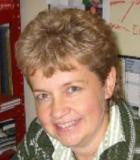
Funzione/Ruolo
Responsabile del Laboratorio Micro e Nanostrutture per la Fotonica presso il Centro Ricerche ENEA di Frascati (RM)
Percorso professionale
Dopo aver conseguito la laurea in Fisica nel 1984 all'Università di Roma "La Sapienza", e' assunta nella Divisione Studi presso Telespazio S.p.A. per le Telecomunicazioni Spaziali di Roma. Dal 1988 è ricercatrice presso il Centro Ricerche ENEA di Frascati (RM), dove dal 2010 è responsabile del Laboratorio Micro e Nanostrutture per la Fotonica. Nell'agosto 2008 è stata Visiting Researcher presso l'Università Federale Tecnologica del Paranà, in Brasile. Nel 2013 ha conseguito l'abilitazione scientifica nazionale alle funzioni di Professoressa Universitaria di prima fascia per Fisica Sperimentale della Materia.
Risultati scientifici
Rosa Maria Montereali è specializzata nell'indagine delle proprietà ottiche di difetti puntiformi in materiali isolanti per la realizzazione di micro-dispositivi ottici, sorgenti di luce miniaturizzate e laser a stato solido per la fotonica e di rivelatori di radiazione innovativi a lettura ottica per imaging-X e dosimetria, applicati in ambito scientifico, medicale e nucleare.
Partecipa all'indagine spettroscopica di nuovi materiali fotoluminescenti in forma di cristalli, polveri nanometriche, colloidi metallici e film sottili di semiconduttori organici di basso peso molecolare, utilizzati con successo per la realizzazione di diodi elettroluminescenti (OLED), in configurazione di risonatori compatti ed efficienti - microcavità ottiche verticali, guide d'onda planari, etc. - attività che svolge in collaborazione con università, enti di ricerca e industrie italiane ed estere, nell'ambito di progetti regionali, nazionali ed europei.
Nell'ambito delle attività di ricerca e sviluppo sulle applicazioni in ottica integrata dei film sottili di fluoruri, trattati con tecniche litografiche, laser e radiazioni ionizzanti di varia natura per la realizzazione di dispositivi fotonici miniaturizzati non-ibridi completamente ottici, il contributo innovativo è stato maggiormente apprezzato in ambito nazionale ed internazionale tramite l'assegnazione di relazioni su invito in prestigiosi congressi e conferenze. È co-inventrice di alcuni brevetti nazionali ed internazionali.
Attività editoriali e pubblicazioni
È autrice di più di 200 pubblicazioni su riviste scientifiche internazionali e/o con referee, tra cui:
[2017] Piccinini M, Nichelatti E, Ampollini A, Picardi L, Ronsivalle C, Bonfigli F, Libera S, Vincenti MA and Montereali RM. Proton beam dose-mapping via color centers in LiF thin film detectors by fluorescence microscopy, Europhysics Letters, 117:37004-1-5.
[2016] Montereali RM, Bonfigli F, Piccinini M, Nichelatti E, Vincenti MA. Photoluminescence of colour centres in lithium fluoride thin films: from solid-state miniaturised light sources to novel radiation imaging detectors, Journal of Luminescence, 170:761-769.
[2016] Fastampa R, Missori M, Braidotti MC, Conti C, Vincenti MA, Montereali RM. Temperature behaviour of optical absorption bands in colored LiF crystals, Results in Physics, 6:74-75.
[2015] Piccinini M, Ambrosini F, Ampollini A, Picardi L, Ronsivalle C, Bonfigli F, Libera S, Nichelatti E, Vincenti MA and Montereali RM. Photoluminescence of radiation-induced color centers in lithium fluoride thin films for advanced diagnostics of proton beams, Applied Physics Letters, 106: 261108_1_4.
[2014] Chiamenti I, Bonfigli F, Gomes ASL, Michelotti F, Montereali RM and Kalinowski HJ. Optical characterization of femtosecond laser induced active channel waveguides in lithium fluoride crystals, Journal of Applied Physics, 115, 2:023108-1-7.
[2013] Francini R, Montereali RM, Nichelatti E, Vincenti MA, Canci N, Segreto E, Cavanna F, Di Pompeo F, Carbonara F, Fiorillo G, Perfetto F. Optical characterization at liquid Argon temperature of Tetraphenyl-butadiene films on glass and specular reflector substrates in the VUV-VIS range of wavelengths, Journal of Instrumentation, JINST 8:P09006.
[2012] Montereali RM, Bonfigli F, Menchini F and Vincenti MA.Optical spectroscopy and microscopy of radiation-induced light-emitting point defects in lithium fluoride crystals and films, Low Temperature Physics 38, 8:779-785, doi: 10.1063/1.4740241; Fizika Nizkikh Temperatur 38, 8:976-984.
[2010] Montereali RM, Almaviva S, Bonfigli F, Cricenti A, Faenov A, Flora F, Gaudio P, Lai A, Martellucci S, Nichelatti E, Pikuz T, Reale L, Richetta M, Vincenti MA. Lithium Fluoride Thin Films Detectors for Soft X-Ray Imaging at High Spatial Resolution, Nuclear Instruments and Methods, A, 623:758-762.
[2007] Sekatskii SK, Dietler G, Bonfigli F, Loreti S, Marolo T, Montereali RM. Subwavelength-Size Local Fluorescent Sources based on Color Centers in LiF for Scanning Near-Field Optical Microscopy, Journal of Luminescence, 122-123:362-364.
[2004] Montereali RM, Gambino S, Loreti S, Gagliardi S, Pace A, Baldacchini G, Michelotti F. Morphological, Electrical and Optical Properties of Organic Light-Emitting Diodes with a LiF/Al Cathode and an Al-Hydroxyquinoline/Diamine Junction, Synthetic Metals, 143: 171-174.
Riconoscimenti e premi
È membro permanente dell'International Advisory Committee della serie di conferenze DIM (Defects in Insulating Materials).

Funzione/Ruolo
Professoressa associata presso il Dipartimento di Fisica dell’Università di Torino
Percorso professionale
Elisa Palazzi si laurea in Fisica nel 2003 e consegue un dottorato in Modellistica fisica per la protezione dell’ambiente nel 2008, entrambi presso l’Università degli studi di Bologna e in collaborazione con l’Istituto di Scienze dell’Atmosfera e del Clima del Consiglio Nazionale delle Ricerche (ISAC-CNR). In questo periodo lavora prevalentemente sulla misura di inquinanti atmosferici nelle aree urbane con tecniche di telerilevamento e sullo sviluppo di strumenti modellistici utili per analizzare e interpretare correttamente le misure. Presso ISAC-CNR svolge attività post-dottorale che include un contratto finanziato dall’Agenzia Spaziale Europea (ESA) finalizzato allo studio della circolazione atmosferica e dei suoi cambiamenti diagnosticati mediante misure satellitari di composti gassosi atmosferici a vita media lunga. Questi studi la avvicinano maggiormente alle attività di ricerca incentrate sul clima e sui cambiamenti climatici che Elisa Palazzi intraprende a partire dal 2011, anno in cui diventa ricercatrice a tempo indeterminato del CNR, presso la sede ISAC di Torino. Da allora studia i cambiamenti climatici nelle regioni di montagna focalizzandosi sull’amplificazione del riscaldamento e sui cambiamenti nelle precipitazioni in alta quota, e ne analizza gli impatti sulle risorse idriche, così importanti anche per le regioni di pianura. Nel 2021 si sposta all’Università come professoressa associata presso il Dipartimento di Fisica dell’Università di Torino, dove insegna Fisica del Clima e Climate System Dynamics and Modelling. E’ stata, dal 2016 al 2024, co-coordinatrice di una rete internazionale di studio sulle montagne chiamata GEO-Mountains (Group on Earth Observations–Global Network for Observations and Information in Mountain Environments) ed è tuttora co-chair di una Iniziativa della European Climate Research Alliance (ECRA) sui cambiamenti nel ciclo idrologico. E’ attualmente autrice e co-autrice di oltre 50 lavori pubblicati su riviste di settore.
Risultati scientifici
Elisa Palazzi ha iniziato la sua attività di ricerca al CNR di Bologna già durante la Laurea e il Dottorato, lavorando sullo sviluppo e l’applicazione di modelli di trasferimento radiativo in atmosfera, basati su tecniche Monte Carlo, e utili per l’interpretazione di misure di gas inquinanti effettuate con tecniche di telerilevamento passivo. Inizia in quegli anni una modalità di lavoro che la caratterizzerà anche successivamente, ovvero la ricerca a cavallo tra parte sperimentale e modellistica. Dal 2009 al 2011, finanziata dall’Agenzia Spaziale Europea (ESA), è stata responsabile scientifico di un progetto inserito nell’ambito del programma ESA “Changing Earth System Network”, in cui ha utilizzato le misure satellitari di gas in traccia a vita media lunga (CO2, CH4, N2O, CFC) per derivare le caratteristiche del trasporto atmosferico attraverso le barriere dinamiche subtropicali e polari. Dal 2011 si specializza maggiormente su studi relativi al clima, ai suoi cambiamenti e alla sua variabilità nelle regioni di alta quota che sono considerate sentinelle del clima che cambia. Studia in particolare l’amplificazione del riscaldamento in montagna e i cambiamenti nella precipitazione, che possono influire sui cambiamenti osservati nella criosfera montana. Su questi temi, ha pubblicato lavori su riviste prestigiose e collabora con una rete di ricerca internazionale per il reperimento e la condivisione di dati climatici nelle regioni di alta quota.
Attività editoriali e pubblicazioni
Elisa Palazzi è editor per la sezione “Remote Sensing of the Water Cycle” della Rivista Remote Sensing– MPDI, dal 2019.
Ha curato (con Antonello Provenzale e Klaus Fraedrich) la pubblicazione del libro The Fluid Dynamics of Climate(CISM International Centre for Mechanical Sciences 564, Courses and Lectures, Springer, 2016).
Fra le sue pubblicazioni più recenti:
[2024] Hunt, K. M. R., Baudouin, J.-P., Turner, A. G., Dimri, A. P., Jeelani, G., Pooja, Chattopadhyay, R., Cannon, F., Arulalan, T., Shekhar, M. S., Sabin, T. P., and Palazzi, E.: Western disturbances and climate variability: a review of recent developments, EGUsphere [preprint], https://doi.org/10.5194/egusphere-2024-820.
[2024] Dirk S Schmeller, James M Thornton, Davnah Urbach, Jake Alexander, Walter Jetz, Aino Kulonen, Robert TE Mills, Claudia Notornicola, Elisa Palazzi, Harald Pauli, Christophe Randin, Sergey Rosbakh, Roger Sayre, Nasrin Amini Tehrani, William WM Verbiest, Tom WN Walker, Sonja Wipf, Carolina Adler, Toward a set of essential biodiversity variables for assessing change in mountains globally, BioScience 74 (8), 539-551.
[2024] Ferguglia, O, E Palazzi, E Arnone, Elevation dependent change in ERA5 precipitation and its extremes, Climate Dynamics 62 (8), 8137-8153.
[2023] Ferguglia, O, J von Hardenberg, E Palazzi, Robustness of precipitation Emergent Constraints in CMIP6 models, Climate Dynamics 61 (3), 1439-1450.
[2022] AP Dimri, E Palazzi, AS Daloz, Elevation dependent precipitation and temperature changes over Indian Himalayan region, Climate Dynamics 59 (1), 1-21.
[2022] Toledo, O., Palazzi, E., Cely Toro, I.M. et al. Comparison of elevation-dependent warming and its drivers in the tropical and subtropical Andes. Clim Dyn 58, 3057-3074. https://doi.org/10.1007/s00382-021-06081-4
[2022] Rotach, M. W., Serafin, S., Ward, H. C., Arpagaus, M., Colfescu, I., Cuxart, J., De Wekker, S. F. J., Grubic, V., Kalthoff, N., Karl, T., Kirshbaum, D. J., Lehner, M., Mobbs, S., Paci, A., Palazzi, E., et al). A collaborative effort to better understand, measure and model atmospheric exchange processes over mountains, Bulletin of the American Meteorological Society, https://journals.ametsoc.org/view/journals/bams/aop/BAMS-D-21-0232.1/BAMS-D-21-0232.1.xml
[2022] Brussolo, E., E. Palazzi, J. von Hardenberg, et al, Aquifer recharge in the Piedmont Alpine zone: historical trends and future scenarios. Hydrol. Earth Syst. Sci., 26, 407-427, https://doi.org/10.5194/hess-26-407-2022.
[2022] Pepin, N. C., et al. Climate changes and their elevational patterns in the mountains of the world. Reviews of Geophysics, 60, e2020RG000730. https://doi.org/10.1029/2020RG000730
[2021] James M. Thornton, Elisa Palazzi, Nicolas C. Pepin, et al, Toward a definition of Essential Mountain Climate Variables, One Earth,Volume 4, Issue 6.
[2020] Terzago, S; Andreoli, V; Arduini, G; Balsamo, G; Campo, L ; Cassardo, C; Cremonese, E; Dolia, D; Gabellani, S; von Hardenberg, J; di Cella, UM; Palazzi, E; Piazzi, G; Pogliotti, P; Provenzale, A: “Sensitivity of snow models to the accuracy of meteorological forcings in mountain environments”, Hydrology and Earth System Sciences, Volume: 24, Issue: 8, pages: 4061-4090, ISSN: 1027-5606.
[2020] Sardella, A; Palazzi, E; von Hardenberg, J; Del Grande, C.; De Nuntiis, P.; Sabbioni, C.; Bonazza, A: “Risk mapping for the sustainable protection of cultural heritage in extreme changing environments”, Atmosphere, Volume 11, Issue 7, Article number 700, ISSN: 2073-4433.
Riconoscimenti e premi
"Premio Gian Giacomo Drago e Fausta Rivera Drago", per l’anno 2017 conferito dall'Istituto Lombardo Accademia di Scienze e Lettere da attribuirsi a uno studioso di non oltre 40 anni per rilevanti ricerche sul tema dei cambiamenti climatici e dei suoi effetti sull’ambiente e la salute dell’uomo.
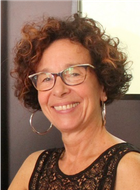
Area STEM: Fisica
Competenze: fisica delle particelle elementari, fisica teorica, fisica teorica delle interazioni fondamentali, gravità quantistica, meccanica quantistica, teoria della relatività di Einstein
Parole chiave: buchi neri, gravità, supersimmetria, teoria dei campi, teoria delle stringhe, teorie di gauge
Regione: Lombardia
Funzione/Ruolo
Professoressa ordinaria di Fisica Teorica all'Università Milano Bicocca.
Percorso professionale
Silvia Penati si laurea in Fisica nel 1984 presso l’Università degli studi di Milano. Nel 1985 entra nella scuola di dottorato del Dipartimento di Fisica dell’Università di Milano dove prende il titolo di Dottore di Ricerca nel 1989. Nel 1988 è vincitrice di una borsa di studio post dottorato presso la Brandeis University, Massachusetts, US, dove svolge le sue ricerche fino alla fine del 1990. Rientrata in Italia con una borsa post dottorato presso il Dipartimento di Fisica dell’Università di Milano, nel 1992 vince in quella sede un concorso da ricercatore. Nel 2000 si trasferisce nella neonata Università di Milano-Bicocca dove diventa professoressa associata nel 2003 e professoressa ordinaria nel 2017. Nel 2013 risulta vincitrice, come Principal Investigator, di un progetto europeo COST “The String Theory Universe”, che coinvolge circa 500 studiosi da 25 paesi europei, progetto di cooperazione scientifica in Fisica Teorica che ha una particolare attenzione al problema della bassa rappresentanza femminile in questo ambito. Dal 2012 al 2018 è Presidente del Consiglio di Coordinamento Didattico del Dipartimento di Fisica, Università di Milano-Bicocca. Dal 2020 coordina un gruppo di lavoro di Ateneo sulle tematiche di genere, nonché il network europeo GenHET, con sede al CERN di Ginevra, attivo nel promuovere e sostenere l’eccellenza femminile nella Fisica Teorica. È relatrice invitata a molti congressi internazionali. È organizzatrice di numerose conferenze internazionali, svolge costantemente attività di revisore per le principali riviste internazionali del settore e di valutatrice esterna per progetti europei e dell’Australian Research Council.
Dal 1992 tiene insegnamenti di Meccanica Quantistica, Relatività Generale, Teoria dei Campi e Metodi Matematici per la Fisica per le Lauree Triennale e Magistrale in Fisica. Tiene periodicamente corsi di supersimmetria in scuole di Dottorato internazionali. Nell’arco della sua carriera ha svolto attività di relatrice di tesi per circa un centinaio di studenti di Laurea Triennale e Magistrale e quindici studenti di Dottorato.
Dal 1985 svolge costantemente attività di divulgazione scientifica nelle scuole secondarie di secondo grado e per il pubblico in generale.
Risultati scientifici
Silvia Penati ha iniziato la sua carriera nella ricerca lavorando su diversi aspetti della teoria delle stringhe, una teoria che, originariamente nata nel tentativo di unificare le quattro forze fondamentali ad alte energie, gravità inclusa, si è successivamente sviluppata come potente apparato matematico, fonte ispiratrice di nuove idee non solo per lo studio teorico delle particelle elementari, ma più in generale per lo studio di sistemi fisici fortemente accoppiati. I principali contributi in questo ambito hanno riguardato lo studio della dinamica interagente di particelle di spin arbitrario, modelli sigma di stringa accoppiati alla gravità, e lo studio di sistemi integrabili in due dimensioni di interesse per le loro applicazioni alla descrizione di fenomeni bidimensionali quali l’effetto Kondo, sistemi dissipativi, problemi di impurità quantistica ed effetto Hall quantistico. Negli anni successivi Silvia Penati si è occupata dello studio di teorie di campo quantistiche con supersimmetria e supergravità, inspirati dalla teoria delle stringhe e di interesse per i più recenti sviluppi sulla descrizione olografica dell’interazione gravitazionale. In questo contesto i risultati più recenti e rilevanti riguardano le teorie di gauge supersimmetriche in tre dimensioni, lo sviluppo di test teorici non banali della corrispondenza AdS/CFT, una realizzazione esplicita del principio olografico per la descrizione della gravità a livello quantistico e dei buchi neri, e la descrizione di sistemi fisici con difetti e impurità.
Attività editoriali e pubblicazioni
Silvia Penati è autrice di più di 100 pubblicazioni su riviste internazionali ad alto impatto con peer-review.
Di seguito una selezione:
[1988] Howe P S, Penati S, Pernici M, Townsend P K, Wave Equations for arbitrary spin from Quantization of the Extended Supersymmetric Spinning Particle, Physics Letters B215 (1988): 555-558.
[1995] Penati S, Zanon D, Quantum Integrability in two-dimensional systems with boundary, Physics Letters B358 (1995): 63-72.
[2000] Mussardo G, Penati S, A quantum Field Theory with Infinite Resonance States, Nuclear Physics B567: 454-492.
[2000] Gates S J, Grisaru M T, Penati S, Holomorphy, minimal homotopy and 4D, N=1 Bardeen-Gross- Jackiw anomaly, Physics Letters B481 (2000): 397-407.
[2002] Arutyunov G, Penati S, Petkou A C, Santambrogio A, Sokatchev E, Nonprotected operators in N=4 SYM and multiparticle states of AdS(5) SUGRA, Nuclear Physics B643 (2002): 49-78.
[2003] Klemm D, Penati S, Tamassia L, Non(anti)commutative superspace, Classical Quantum Gravity 20 (2003): 2905-2916.
[2003] Grisaru M T, Penati S, Romagnoni A, Two loop renormalization for nonanticommutative N=1/2 supersymmetric Z model, JHEP 08 (2003):003.
[2005] Mauri A, Penati S, Santambrogio A, Zanon D, Exact results in planar N=1superconformal Yang-Mills theory, JHEP 11 (2005): 024.
[2010] Bianchi M S, Penati S, Siani M, Infrared stability of N=2 Chern-Simons matter theories, JHEP 05 (2010): 106.
[2011] Bianchi M S, Leoni M, Mauri A, Penati S, Santambrogio A, Scattering Amplitudes/Wilson Loop duality in ABJM theory, JHEP 01 (2011): 073.
[2017] Bianchi M S, Griguolo L, Mauri A, Penati S, Preti M, Seminara D, Towards the exact Bremsstrahlung function of ABJM theory, JHEP 08 (2017): 022.
[2021] Penati S, Superconformal Line Defects in 3D, Universe 7 (2021) 9: 348.
La lista completa è disponibile su
https://inspirehep.net/literature?sort=mostrecent&size=25&page=1&q=a%20penati%2Cs.
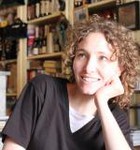
Funzione/Ruolo
Ricercatrice presso l'Osservatorio Astronomico INAF di Roma
Percorso professionale
Dopo aver conseguito la laurea in Fisica nel 2005 presso l'Università La Sapienza di Roma, prosegue la sua formazione prima attraverso un dottorato di ricerca in Astronomia nello stesso ateneo nel 2009, poi con un master di specializzazione in Scienza e Tecnologie Spaziali all'Università Tor Vergata nel 2012. Già dal 2006 è research assistant dell'Osservatorio Astronomico di Roma, mentre nel 2010 è visiting scientist del Max Planck Institute for Extraterrestrial Physics (MPE), in Germania. Nel 2012 svolge un tirocinio presso la Thales Alenia Space. Continua le sue ricerche all'interno dell'Osservatorio Astronomico di Roma in cui oggi è ricercatrice.
Risultati scientifici
Paola Santini studia l'evoluzione delle galassie a partire dalla loro formazione nelle primissime fasi di vita del nostro Universo. Misurandone e interpretandone i segnali, cerca di comprendere i meccanismi fisici alla base della loro evoluzione, e spiegare come l’Universo è arrivato ad essere quello che osserviamo oggi. Alcune delle domande a cui cerca di dare risposta sono, ad esempio, come e quanto rapidamente le galassie formano le loro stelle, come e perché a un certo punto smettono di formarne, e come questi processi variano nel tempo. A tal scopo, si avvale delle migliori immagini a disposizione acquisite da strumenti all’avanguardia da spazio e da terra nell’ambito di importanti survey extragalattiche, risultato di grosse collaborazioni internazionali. Sfrutta principalmente osservazioni ottiche, infrarosse e submillimetriche. Con i suoi studi getta uno sguardo direttamente sul passato remoto del nostro Universo, osservando la debolissima luce proveniente da galassie che si trovano in epoche differenti dell'evoluzione cosmica.
Attività editoriali e pubblicazioni
Paola Santini è autrice e coautrice di oltre 200 pubblicazioni scientifiche. L'elenco aggiornato è disponibile su ADS Public Library.
Riconoscimenti e premi
Nel 2015 vince il premio Giovani Ricercatori Italiani istituito dal Gruppo 2003 (un gruppo di scienziati italiani che lavorano per la valorizzazione dei giovani) per la ricerca scientifica.
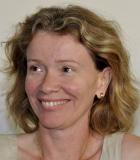
Funzione/Ruolo
Professoressa ordinaria di Astrofisica presso l'Università della Calabria (Arcavacata di Rende, Italy)
Percorso professionale
Dopo aver conseguito il dottorato di ricerca in Fisica all'Università della Calabria, Sandra Savaglio diventa Fellow e Senior Research Scientist presso alcuni importanti centri di ricerca internazionali come la John Hopkins University, lo European Southern Observatory (Monaco di Baviera) e lo Space Telescope Science Institute (Baltimora). Lavora anche in Germania, all'Istituto Max-Planck per la Fisica Extraterrestre. Alla ricerca affianca l'insegnamento dell'Astrofisica presso la John Hopkins e l'Università Tecnica a Monaco di Baviera. Nel 2004 finisce sulla copertina della rivista Time Magazine, scelta come simbolo della fuga dei cervelli europei verso gli Stati Uniti. Quasi 10 anni dopo, nel 2014, rientra in Italia: il Consiglio d'amministrazione dell'Università della Calabria decide di procedere alla chiamata diretta della studiosa. Savaglio accetta, ed oggi è professoressa ordinaria di Astrofisica nella sede universitaria di Arcavacata (Cosenza).
Risultati scientifici
I principali interessi di ricerca di Sandra Savaglio riguardano la cosmologia osservativa, l'arricchimento chimico dell'universo e dei fenomeni esplosivi, in particolare le galassie lontane e le galassie che ospitano le esplosioni più energetiche dell'universo mai osservate finora: i lampi gamma (Gamma Ray Burts, GRB), che possono durare da pochi millisecondi a diverse decine di minuti. Per fare ciò utilizza i più potenti telescopi a raggi ultravioletti, infrarossi e ottici. Nel 2006 ha creato il database pubblico GRB Host Studies (GHostS), che contiene informazioni relative alle galassie che ospitano lampi gamma utilizzato dal 2007 al 2015 per oltre 33 studi di altissimo livello. GHostS rappresenta la più grande e completa banca dati di questo tipo al mondo.
Attività editoriali e pubblicazioni
Sandra Savaglio ha scritto due libri di divulgazione: Tutto l’universo per chi ha poco spazio-tempo (Mondadori, 2018) e, con Mario Caligiuri, Senza Attendere (Rubettino, 2006).
E' autrice, o co-autrice, di oltre 200 pubblicazioni su riviste scientifiche e atti di congressi internazionali, tra cui:
(2015) Greiner J, Savaglio S, et al. A very luminous magnetar-powered supernova associated with an ultra-longγ-ray burst, Nature, 523, 189.
(2012) Savaglio S et al. Supersolar metal abundances in two galaxies at z ~ 3.57 revealed by the GRB 090323 afterglow spectrum, Monthly Notices of the Royal Astronomical Society.
(2009) Savaglio S, Glazebrook K, Le Borgne D. The Galaxy Population Hosting Gamma-Ray Bursts, The Astrophysical Journal.
(2006) Savaglio S. GRBs as cosmological probes: cosmic chemical evolution, New Journal of Physics.
(2005) Savaglio S et al. The Gemini Deep Deep Survey. VII. The Redshift Evolution of the Mass-Metallicity Relation, The Astrophysical Journal.
(2004) Glazebrook K, Abraham RG, McCarthy PJ, Savaglio S, et al. A high abundance of massive galaxies 3-6 billion years after the Big Bang, Nature, 430, 181.
(2004) Savaglio S & Fall SM. Dust Depletion and Extinction in a Gamma-Ray Burst Afterglow, The Astrophysical Journal.
(2003) Savaglio S, Fall SM & Fiore F. Heavy-Element Abundances and Dust Depletions in the Host Galaxies of Three Gamma-Ray Bursts, The Astrophysical Journal.
(1999) Savaglio S. The LyαForest of the Quasar in the Hubble Deep Field South, The Astrophysical Journal Letters.
(2000) Savaglio S, Carbone V. Scaling in Atletics World Records, Nature, 404, 244.
Riconoscimenti e premi
Nel 2008 riceve il premio internazionale "Pythagoras" conferito a scienziati che si sono distinti per i traguardi ottenuti nel campo della Fisica e della Matematica. Nel 2010 e 2011 vince i premi internazionali dedicati a personalità importanti di origine calabrese "Made in Calabria e Calabria in the World". Nel 2014 viene insignita del premio internazionale "Prime Donne", conferito a donne capaci di valorizzare la presenza femminile nella società. Nel 2015 le è attribuito il premio internazionale "Pericle d'Oro" e riceve anche il premio internazionale "Frescobaldi". Nel 2016 riceve il premio internazionale "Vittorio De Sica".

Funzione/Ruolo
Professoressa Ordinaria all’Istituto Niels Bohr dell’Università di Copenhagen, Copenhagen, Danimarca
Percorso professionale
Irene Tamborra ha conseguito la Laurea Triennale in Fisica nel 2005 e la Laurea Magistrale in Fisica Teorica nel 2007, entrambe all’Università di Bari. Presso la stessa università, ha ottenuto il Dottorato di Ricerca con una tesi in Fisica Astroparticellare nel 2011. È stata Alexander von Humboldt Research Fellow presso il Max Planck Institute for Physics a Monaco di Baviera dal 2011 al 2013 e ricercatrice al Centro di Eccellenza GRAPPA dell’Università di Amsterdam dal 2013 al 2015. Si è trasferita all’Università di Copenhagen nel 2016 come Knud Højgaard Assistant Professor. È stata promossa Professoressa Associata nel 2017 e Professoressa Ordinaria nel 2021.
Risultati scientifici
La sua ricerca è all’intersezione tra l’astrofisica e la fisica delle particelle. Irene Tamborra ha proposto numerose idee per esplorare vari oggetti astrofisici tramite delle particelle elementari chiamate neutrini. La sua ricerca ha anche l’obiettivo di connettere la fisica che avviene all’interno delle sorgenti astrofisiche a livello microscopico alle osservazioni multi-messaggere su larga scala. Parte del lavoro di ricerca di Irene Tamborra è incentrato sulle oscillazioni di sapore dei neutrini, specialmente nel contesto delle sorgenti astrofisiche compatte e dell’universo primordiale, dove i neutrini sono estremamente abbondanti. Si occupa anche di esplorare l’origine degli elementi in ambito astrofisico e l’esistenza di nuova Fisica oltre quella prevista dal Modello Standard delle Particelle Elementari. Nel 2014, ha scoperto una nuovo fenomeno che avviene poco prima dell’esplosione di una supernova: LESA. LESA non è altro che una asimmetria macroscopica nell’emissione di neutrini e antineutrini elettronici ed è tuttora oggetto di intensa attività di ricerca.
Attività editoriali e pubblicazioni
Irene Tamborra è autrice di numerose pubblicazioni scientifiche. La lista completa è disponibile online, su Google Scholar.
Riconoscimenti e premi
Nel 2009 ha ricevuto il premio “Antonio Stanghellini” dalla Società Italiana di Fisica. Nel 2011 ha ricevuto la menzione di onore per il premio “Fubini” del’Istituto Italiano di Fisica Nucleare; nello stesso anno è diventata “Alexander von Humboldt Fellow”. Nel 2019 è stata eletta “Distinguished Associate Professor” dalla Fondazione Carlsberg, ha ricevuto il premio “MERAC” dalla Società Astronomica Europea e il premio “S. P. Duggal” dall’Unione Internazionale di Fisica Pura e Applicata. Nel 2020, ha ricevuto il premio per le “Donne in Fisica” dal Network Danese di Donne in Scienza. Irene Tamborra è membro dell’Unione Internazionale degli Astronomi, della Società Astronomica Europea e ricopre incarichi di rilievo in numerose commissioni internazionali.
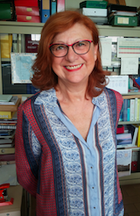
Funzione/Ruolo
Prima Ricercatrice dell'Istituto Nazionale di Fisica Nucleare (INFN), sezione di Milano
Percorso professionale
Dopo aver conseguito la laurea in Fisica presso l'Università di Trieste nel 1977 prosegue la sua formazione prima come Summer Student nel 1978 presso il CERN e poi frequentando la Scuola di specializzazione in Fisica a Trieste, come borsista del Consorzio per l'Incremento studi e Ricerche dei Dipartimenti di Fisica dell'Università di Trieste. Nel 1983 entra a far parte dell'Istituto Nazionale di Fisica Nucleare, sezione di Trieste, come ricercatrice e successivamente nella sezione di Milano. E' associata scientifica presso il CERN di Ginevra, ininterrottamente dal 1978.
Risultati scientifici
I due principali filoni di ricerca di Clara Troncon sono lo studio della Fisica delle particelle elementari con acceleratori e, nello specifico, le misure delle proprietà degli Heavy Flavour, le verifiche di precisione del Modello Standard, inclusa la ricerca e poi la scoperta del bosone di Higgs e la ricerca dell'evidenza di segnali di nuova fisica oltre il Modello Standard. Il secondo filone comprende lo sviluppo, la progettazione e la realizzazione di sensori di silicio a microstrip e pixel e lo sviluppo, la progettazione, la realizzazione, commissioning e operazione di rivelatori di vertice. La sua attività di ricerca inizia al CERN, dove dal 1979 al 1986 si dedica allo studio del quark charm con gli esperimenti dell'EHS, European Hybrid Spectrometer, all'acceleratore SPS (SuperProtoSincrotrone). Dal 1986 al 2000 partecipa all'esperimento DELPHI all'acceleratore LEP del CERN, dove contribuisce alle misure di precisione del bosone neutro Z0 e del bosone W, alle verifiche del Modello Standard e alla ricerca del bosone di Higgs. Il suo gruppo collabora alla costruzione del rivelatore di vertice al silicio di DELPHI. Nel 1997, inizia a partecipare all'esperimento ATLAS al Large Hadron Collider (LHC) del CERN, in cui ha un ruolo importante nella costruzione del rivelatore a pixels. Dopo l'installazione di questo rivelatore nel 2008, si dedica alla ricerca e allo studio del bosone di Higgs e alla ricerca di particelle supersimmetriche e di segnali di una nuova fisica alla scala del TeV(teraelettronvolt) Si è inoltre impegnata dal 1996 al 2000 in attività di studio per i futuri Linear Colliders attraverso il Conceptual Design del Next Linear Collider e lo studio di fattibilità per la ricerca del bosone di Higgs. Dal 2001 al 2006 attraverso la collaborazione RD50 si è dedicata alla ricerca e sviluppo di rivelatori a semiconduttore resistenti a radiazione per collisori di altissima luminosità.
Attività editoriali e pubblicazioni
E' autrice di oltre 1.100 pubblicazioni scientifiche, fra cui:
(2016) ATLAS Collaboration, Aad G, Troncon C, et al. Search for dark matter produced in association with a Higgs boson decaying to two bottom quarks in pp collisions at √s=8 TeV with the ATLAS detector. Physical Review D, 93: 7, 072007.
(2016) ATLAS Collaboration, Aad G, Troncon C, et al. Search for magnetic monopoles and stable particles with high electric charges in 8 TeV pp collisions with the ATLAS detector. Physical Review D, 93:5, 05200.
(2013) ATLAS Collaboration, Aad G, Troncon C, et al. Evidence for the spin-0 nature of the Higgs boson using ATLAS data. Physical Review Letters B, 726, 120-144.
(2012) ATLAS Collaboration, Aad G, Troncon C, et al. Search for squarks and gluinos using final states with jets and missing transverse momentum with the ATLAS detector in √s=7 TeV proton-proton collisions. Physical Letters B, 710, 67-85.
(2012) ATLAS Collaboration, Aad G, Troncon C, et al. Observation of a new particle in the search for the Standard Model Higgs boson with the ATLAS detector at the LHC. Physical Review Letters B, 716, 1-29.
(2011) ATLAS Collaboration, Aad G, Troncon C, et al. Measurement of the top quark-pair production cross section with ATLAS in pp collisions at √s=7 TeV. The European Physical Journal A, C71, 1577.
(2010) ATLAS Collaboration, Aad G, Troncon C, et al. Observation of a Centrality-Dependent Dijet Asymmetry in Lead-Lead Collisions at √sNN=2.77 TeV with the ATLAS Detector at the LHC. Physical Review Letters, 105, 252303.
(2008) ATLAS Collaboration, Aad G, Troncon C, et al. The ATLAS Experiment at the CERN Large Hadron Collider. JINST 3: S08003.
(1998) Accomando E, Troncon C, et al. Physics with e+ e- colliders. Physics Report C, 299, 1. Amsterdam (Olanda).
(1996) DELPHI Collaboration, Abreu P, Troncon C, et al. Performance of the DELPHI Detector. Nuclear Instruments and Methods in Physics Research A, 378, 57.
Riconoscimenti e premi
Dal 2006 al 2012 è stata membro eletto della INFN CSN1 (Commissione Scientifica Nazionale 1, Fisica delle particelle con acceleratori) e referee per l’esperimento Babar nella CSN1. Dal 2011 al 2014 ha fatto parte dell’ANVUR (Agenzia Nazionale per la Valutazione della Qualità della Ricerca), del MIUR e coordinatrice del subGEV02 (Fisica sperimentale, Particelle e Nucleare).
Dal 2012 a oggi Clara Troncon fa parte del Gruppo di Lavoro per la Valutazione INFN (fase finale VQR) e responsabile della delegazione per la CSN1. Dal 2013 su designazione del Presidente dell'INFN, viene nominata dal Direttore Generale del CERN Delegata italiana nel comitato CERN ACCU (Advisory Committee of CERN Users), carica successivamente rinnovata. Nel 2015 è designata da ACCU come Rappresentante ACCU nel CERN Scientific Information Policy Board. Nello stesso anno diventa membro del GEV02 (Gruppo Esperti della Valutazione per le Scienze Fisiche per la VQR (Valutazione della qualità della Ricerca 2015-2017, per l’ANVUR-MIUR e coordinatrice del subGEV02_I (Fisica sperimentale, Particelle e Nucleare), carica che ricopre ancora oggi.
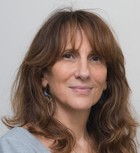
Funzione/Ruolo
Chief Diversity Officer, European Space Agency
Percorso professionale
Ersilia Vaudo si è laureata in Astrofisica all’Università La Sapienza di Roma, dove ha inizialmente lavorato nel Dipartimento di Cosmologia su esperimenti per la misura dell’anisotropia della radiazione di fondo cosmico. Dal 1991 lavora all’Agenzia Spaziale Europea, a Parigi, dove attualmente è Chief Diversity Officer.
Durante la sua carriera ha ricoperto vari ruoli strategici, tra cui la preparazione delle decisioni a livello Ministerale, il supporto alla formulazione della Strategia Spaziale Europea e del programma di Esplorazione Spaziale dell’ ESA, la creazione dell’European Space Policy Institute a Vienna, ed è stata Segretario Esecutivo del Gruppo consultivo scientifico-tecnologico della missione ExoMars. Ha inoltre lavorato quattro anni all’ufficio dell’ESA di Washington DC, curando in particolare le relazioni con la NASA. Ersilia Vaudo è stata membro del Board of Directors di Women in Aerospace US ed è attualmente membro dell’International Women’s Forum, di Women in Aerospace – Europe, e del Women’s Forum for the Economy & Society Daring Circle.
Risultati scientifici
Ersilia Vaudo Scarpetta ha una lunga esperienza in programmi spaziali, in particolare scienza e esplorazione, strategia spaziale europea, relazioni con la NASA. Inoltre, lavora per promuovere l'avanzamento delle ragazze e delle donne nell'eduzione e nelle carriere STEM e promuove i valori della diversità e inclusione.
Ha tenuto diversi TEDx Talk, fra cui:
TEDX Bari, 2015: L’Universo e’ resiliente?
TEDX Roncade, 2015: La sfida della conoscenza
TEDX Matera, 2018: Donne, Spazio e Superpoteri
TEDX THBrandenburg: A journey through Space. Stretching the limits
Attività editoriali e pubblicazioni
(2019) Piu' donne di scienza per vincere la sfida della competitività, Il Sole 24 Ore
(2018) Simply into science, how to tear down the STEM gender, Worldcrunch.com
(2018) La Scienza delle Donne, Wired
(2018) Why women in space are developing science ‘superpowers’, becoming smarter and shooting higher, Womenthology.co.uk
(2017) Lunar glow: what is driving the new space race to the Moon, Worldcrunch.com
(2016) Space and its Links to Economic Theory and Public Support, in "Theorizing European Space Policy" (a cura di Thomas C. Hoerber e Emmanuel Sigalas), Washington DC: Rowman & Littlefield
(2016) Il futuro del lavoro ai tempi del determinismo tecnologico, Il Menabo’ di Etica ed Economia
(2015) The role of space in support of the common objectives of the European Nordic countries, 66th International Astronautical Congress, Jerusalem, Israel
(2014) Rosetta, the comet Hunter, Il Menabo’ di Etica ed Economia
(2002) Assessing ESA’s Current Voting Rules and Practice and Potential Weighted Voting Systems in the Perspective of Enlargement, ESA Bulletin.
Riconoscimenti e premi
Ersilia Vaudo Scarpetta ha ricevuto numerosi premi e riconoscimenti.
Nel 1983, ha ricevuto la borsa di studio "Enrico Persico", dell'Accademia dei Lincei
Nel 1986, la borsa di studio "Amelia Earhart" Fellowship per merito distintivo negli studi di astrofisica
Nel 2016 ha vinto il "Premio Cajeta" nella categoria "Scienza e Ricerca Scientifica".
Nel 2019 è stata nominata per lo "European Diversity Awards" nella categoria "Head of Diversity of the Year " e inclusa nella lista delle "Unstoppable Women" di StartupItalia che riconosce l’impegno delle donne nell'innovazione in Italia. Nello stesso anno è stata chiamata per la Lectio Magistralis di Inaugurazione del 157mo Anno Accademico al Politecnico di Milano.
Nel settembre 2021 viene nominata fra le 50 donne italiane di maggiore ispirazione per il mondo della tecnologia con il riconoscimento InspiringFifty for Italy.
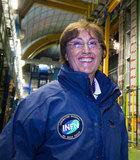
Funzione/Ruolo
Dirigente di Ricerca, Associata ai Laboratori Nazionali di Frascati dell'Istituto Nazionale di Fisica Nucleare (INFN)
Percorso professionale
Si laurea in Fisica all'Università La Sapienza di Roma nel 1971, proseguendo la sua formazione all'interno dei Laboratori Nazionali di Frascati dell'Istituto Nazionale di Fisica Nucleare (INFN), dove diventa ricercatrice stabilizzata nel 1975. Durante l'attività di ricerca sperimentale in fisica delle particelle lavora anche presso il CERN di Ginevra e il laboratorio DESY di Amburgo. Dalla fine degli anni '80 si dedica principalmente alla fisica astro-particellare conducendo esperimenti presso il Laboratorio INFN del Gran Sasso, il laboratorio sotterraneo dedicato alla fisica astro-particellare più grande e importante del mondo per numero di esperimenti e per complessità d'infrastrutture tecnologiche e di sicurezza. Nel 2009 diventa direttrice del Laboratorio del Gran Sasso, prima donna a ricoprire tale incarico, fino al 2012.
Risultati scientifici
Lucia Votano svolge la sua attività di ricerca di base nel campo della fisica sperimentale delle particelle elementari di alta energia e nel campo della fisica astro-particellare, un settore di congiunzione tra astrofisica, cosmologia e studio delle interazioni fondamentali delle particelle elementari. I suoi interessi principali riguardano da molti anni lo studio dei neutrini, una particella elementare di cui esistono tre tipi di "sapore" diverso. I neutrini sono insieme ai fotoni le particelle più numerose nell'universo di materia ordinaria. Interagiscono pochissimo con essa e sono quindi in grado di attraversare indisturbati grandi corpi celesti, portandoci informazioni dagli angoli più remoti dell'universo. Con il progetto internazionale OPERA al Laboratorio del Gran Sasso, Lucia Votano e il suo team sono stati capaci di misurare in maniera diretta per la prima volta al mondo l'oscillazione (la trasformazione) del neutrino di sapore muonico in neutrino di tipo tau. OPERA ha utilizzato il fascio di neutrini prodotto al CERN di Ginevra e inviato al laboratorio del Gran Sasso con un viaggio di 730 km di lunghezza sotto la crosta terrestre e di circa 2,4 millisecondi di durata. Attraverso l'oscillazione si è dimostrato che i neutrini hanno massa, ancorché piccolissima: un segnale di nuova fisica al di là del Modello Standard delle particelle elementari e delle interazioni fondamentali. Dal 2015 Lucia Votano è impegnata assieme ad altri colleghi nell'esperimento internazionale JUNO (Jiangmen Underground Neutrino Observatory) che verrà realizzato nel sud della Cina entro il 2020. Si tratta di un gigantesco rivelatore sotterraneo di ultima generazione per neutrini, utile a indagare ulteriormente la loro natura attraverso il fenomeno dell'oscillazione, che permette loro di mutare da un tipo (di sapore) a un altro.
Attività editoriali e pubblicazioni
È coautrice di circa 300 articoli scientifici pubblicati su riviste internazionali, tra cui:
(2018) M. Reguzzoni et al., GIGJ: a crustal gravity model of the Guangdong Province for predicting the geoneutrino signal at the JUNO experiment.
arXiv:1901.01945 [physics.geo-ph].
(2018) N. Agafonova et al. Final Results of the OPERA Experiment on ντ appearance in the CNGS Neutrino Beam. Phys. Rev. Lett. 120, 211801.
(2018) N. Agafonova et al. Final results of the search for νμ→νe oscillations with the OPERA detector in the CNGS beam. JHEP 1806, 151.
(2018) N. Agafonova et al. Measurement of the cosmic ray muon flux seasonal variation with the OPERA detector. arXiv:1810.10783 [hep-ex].
(2018) F. Riggi et al. Time and orientation long-distance correlations between extensive air showers detected by the MRPC telescopes of the EEE Project Nuovo Cim. C40, 6, 196.
(2018) M. Grassi et al. Charge reconstruction in large-area photomultipliers
JINST 13 (02): P02008.
(2018) A. Paoloni, A. Mengucci, M. Spinetti, M. Ventura, L. Votano. Streamer studies in Resistive Plate Chambers, arXiv:1806.03443 [physics.ins-det].
(2016) Agafonova A, Aleksandrov A, Votano L, et al. Determination of the muon charge sign with the dipolar spectrometers of the OPERA experiment.Journal of Instrumentation, 11, 07.
(2016) Berra A, Cecchini S, Cindolo F, Votano L, et al. Longitudinally segmented shashlik calorimeters with SiPM readout. Nuclear Instruments and Methods in Physics Research Section A Accelerators Spectrometers Detectors and Associated Equipment.
(2016) Abbrescia M, Avanzini C, Baldini L, Votano L, et al. A study of upward going particles with the Extreme Energy Events telescopes Nuclear Instruments and Methods in Physics Research A. Nuclear Instruments and Methods in Physics Research Section A Accelerators Spectrometers Detectors and Associated Equipment, 816.
Lucia Votano ha anche scritto du libri a carattere divulgativo: Il fantasma dell’universo. Che cos’è il neutrino (Carocci, 2015) and La via della seta. La fisica da Enrico Fermi alla Cina (Di Renzo, 2017).
Riconoscimenti e premi
Lucia Votano è stata insignita nel 2010 dell'Onorificenza della Presidenza della Repubblica Italiana di "Commendatore Ordine al Merito".
Ha ricevuto inoltre numerosi premi e riconoscimenti per meriti scientifici, fra cui il premio "Guido Dorso", il premio "Minerva, Roma Capitale delle Donne 2013", il premio internazionale "L'Altra Italia", il premio internazionale "NordSud" per le scienze esatte e naturali, il premio "Life Gates".



